Coral Cut Treatment: Expert Guide to Reef Wound Care and Prevention
How to properly clean and treat a coral cut. What are the risks of reef wounds. When should you seek medical attention for a coral injury. How to prevent coral cuts while surfing or diving. What are the best methods for coral cut scar treatment.
Understanding Coral Cuts: Causes and Risks
Coral cuts are a common hazard for surfers, divers, and ocean enthusiasts. These injuries occur when the skin comes into contact with the sharp, abrasive surface of coral reefs. While they may seem minor at first, coral cuts can pose serious health risks if not properly treated.
Why are coral cuts so dangerous? The main reasons include:
- Coral fragments can embed in the wound, leading to infection
- Some coral species contain toxins that can cause additional pain and inflammation
- The marine environment increases the risk of bacterial contamination
- Deep cuts may require stitches and can result in significant scarring
In severe cases, untreated coral cuts can lead to septicemia, a potentially life-threatening blood infection. This underscores the importance of prompt and proper wound care.
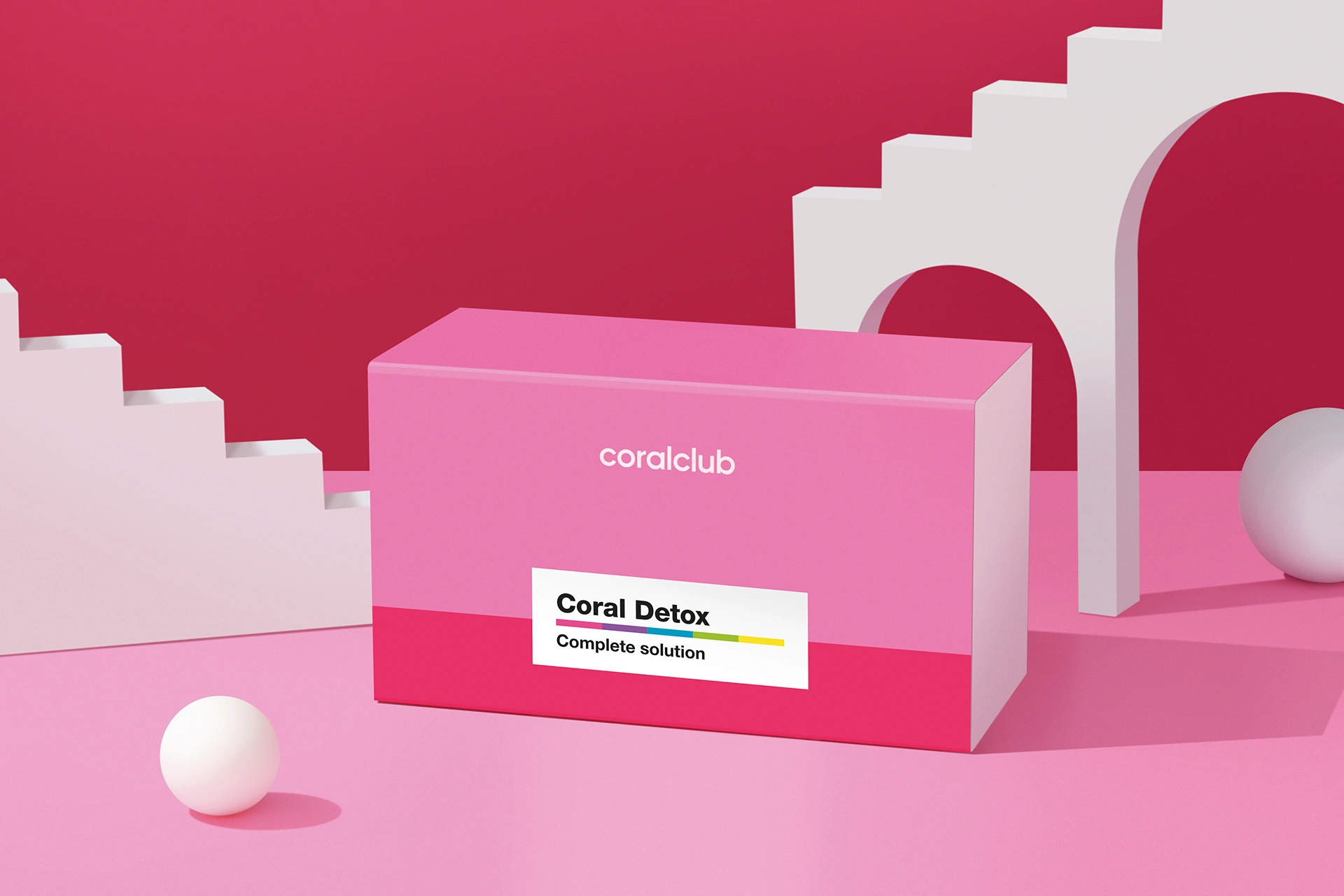
Immediate First Aid for Coral Cuts
If you sustain a coral cut, taking quick action can help prevent complications. Follow these steps for immediate first aid:
- Exit the water and rinse the wound thoroughly with clean fresh water
- Gently clean the area with mild soap and water
- Remove any visible coral fragments with tweezers if possible
- Apply pressure to stop any bleeding
- If available, flush the wound with vinegar to neutralize potential coral toxins
- Cover the wound with a clean, sterile bandage
Is it necessary to seek medical attention for all coral cuts? While minor scrapes can often be treated at home, it’s advisable to consult a healthcare professional for deeper cuts, signs of infection, or if you’re unsure about proper wound care.
When to Seek Medical Treatment for Coral Cuts
Certain situations warrant immediate medical attention for coral cuts. Seek professional help if:
- The cut is deep or wide
- Bleeding doesn’t stop with applied pressure
- You can’t remove all visible coral fragments
- The wound shows signs of infection (redness, swelling, warmth, or pus)
- You develop a fever or feel unwell
- You haven’t had a tetanus shot in the last 5 years
A healthcare provider can properly clean the wound, remove any remaining coral fragments, and determine if antibiotics or stitches are necessary.

Proper Care and Healing of Coral Cuts
Ensuring proper healing of coral cuts is crucial to prevent complications and minimize scarring. Follow these guidelines for optimal wound care:
- Keep the wound clean and dry
- Change bandages daily or when they become wet or dirty
- Apply antibiotic ointment as directed by a healthcare professional
- Take any prescribed oral antibiotics as instructed
- Monitor the wound for signs of infection
- Avoid swimming or submerging the wound until it’s fully healed
How long does it take for a coral cut to heal? Healing time varies depending on the severity of the cut, but most wounds should show significant improvement within 1-2 weeks. Deep cuts may take longer to heal completely.
Preventing Coral Cuts: Safety Tips for Ocean Activities
Prevention is always better than cure when it comes to coral cuts. Here are some essential safety tips to minimize your risk:
- Wear protective gear such as wetsuits, rash guards, and water shoes
- Be aware of your surroundings and maintain a safe distance from coral reefs
- Use proper swimming and diving techniques to avoid accidental contact with coral
- Check local conditions and tide reports before entering the water
- Respect marine life and avoid touching or standing on coral
By following these precautions, you can significantly reduce your chances of sustaining a coral cut while enjoying ocean activities.
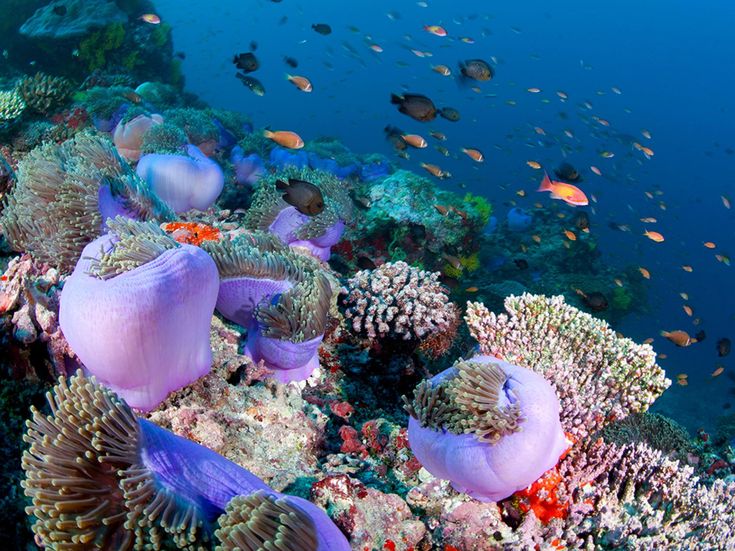
Treating Coral Cut Scars: Effective Methods and Products
Even with proper care, some coral cuts may leave scars. Fortunately, there are several methods to minimize scarring and promote healthy skin healing:
- Silicone sheets or gels: These products can help flatten and fade scars
- Vitamin E oil: Known for its skin-healing properties
- Sunscreen: Protecting the scar from UV rays prevents further discoloration
- Massage: Gentle massage can improve blood flow and reduce scar tissue
- Professional treatments: For severe scars, options like laser therapy or microneedling may be recommended
When should you start scar treatment after a coral cut? It’s best to wait until the wound is fully closed and healed, typically about 2-4 weeks after the injury. Always consult with a healthcare professional before starting any scar treatment regimen.
The Impact of Coral Cuts on Marine Ecosystems
While coral cuts can be harmful to humans, it’s important to consider the impact of these interactions on coral reefs themselves. Coral are living organisms that play a crucial role in marine ecosystems:
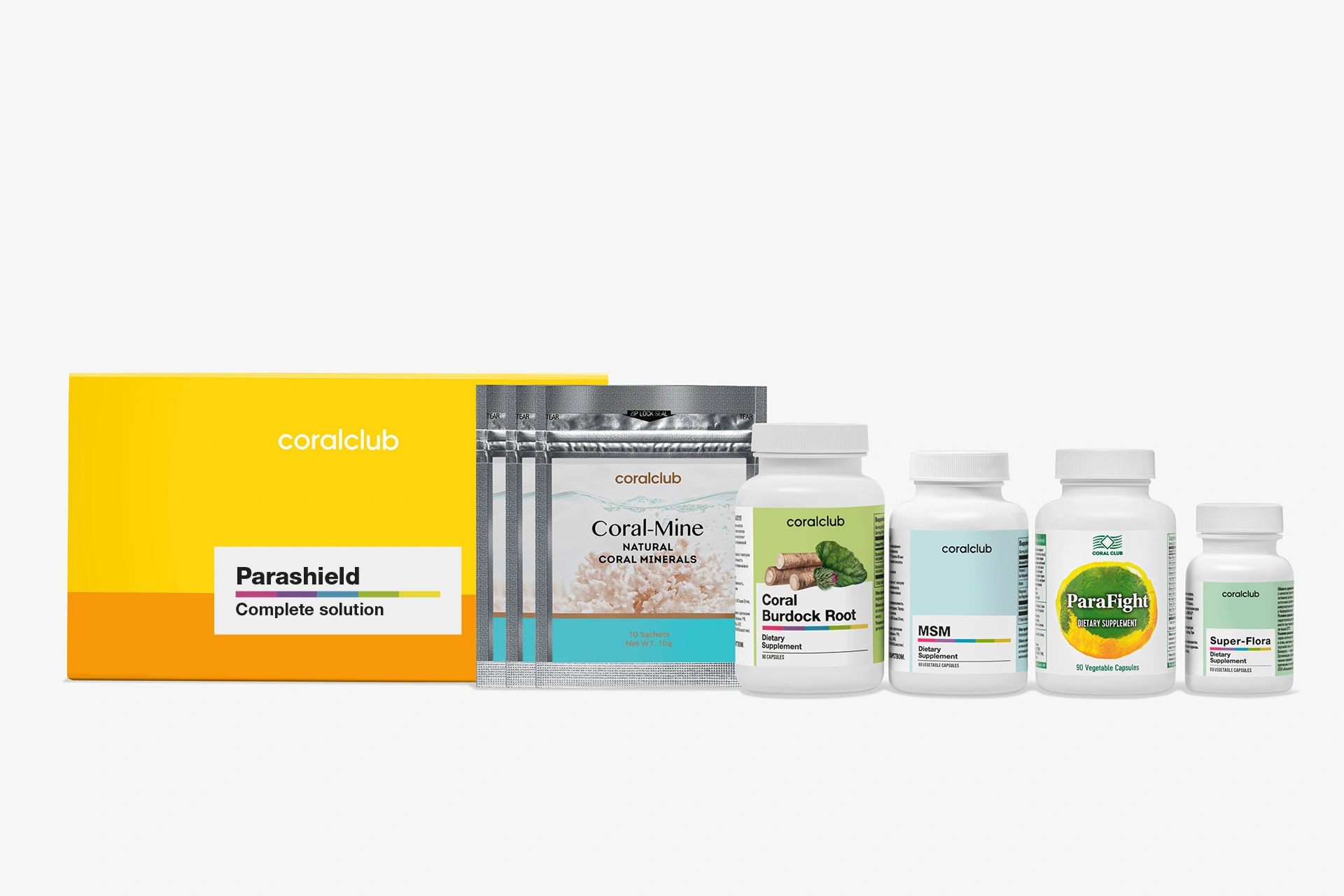
- Coral reefs provide habitat for countless marine species
- They act as natural barriers, protecting coastlines from storms and erosion
- Coral reefs support local economies through tourism and fishing
- They are sources of potential new medicines and scientific discoveries
Human contact, including accidental cuts, can damage fragile coral structures. This underscores the importance of responsible ocean activities and conservation efforts to protect these vital ecosystems.
The Anatomy of Coral: Understanding What Causes Cuts
To better understand why coral cuts occur, it’s helpful to examine the structure of coral itself:
- Exoskeleton: The hard, outer layer that can cause cuts
- Polyps: The soft-bodied animals living within the exoskeleton
- Calcium carbonate: The mineral that forms the rigid structure
The sharp edges and rough texture of coral exoskeletons are what typically cause cuts when human skin comes into contact with them. This protective structure helps coral defend against predators in their natural environment.
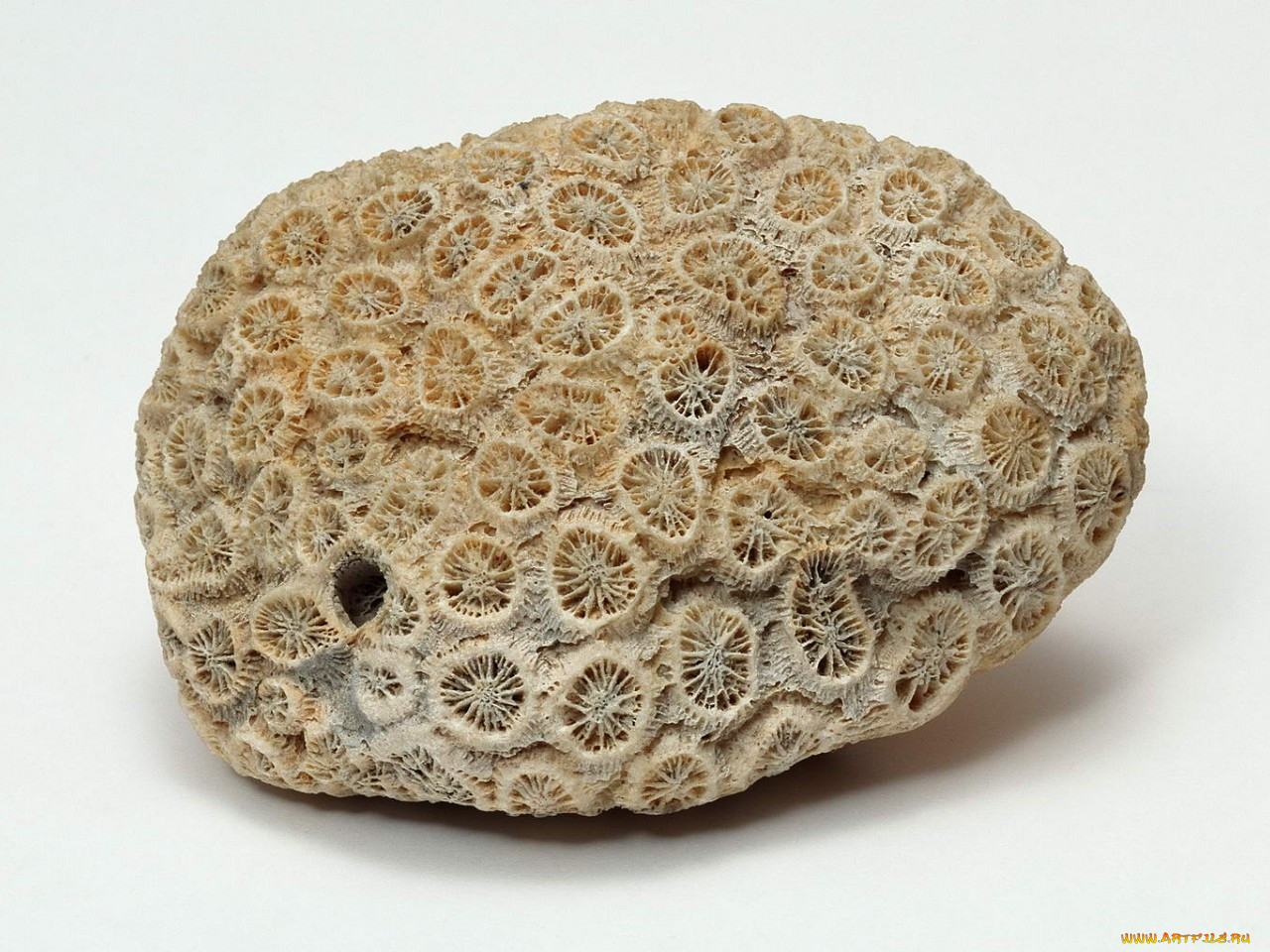
Legal and Ethical Considerations of Coral Interactions
Interacting with coral reefs, even accidentally, can have legal and ethical implications:
- Many coral species are protected by law
- Damaging coral in protected areas may result in fines or legal action
- Ethical tourism practices encourage minimal impact on marine environments
It’s crucial for ocean enthusiasts to be aware of local regulations and practice responsible behavior to protect these delicate ecosystems.
The Role of Climate Change in Coral Health
Climate change is having a significant impact on coral reefs worldwide:
- Rising ocean temperatures cause coral bleaching
- Ocean acidification weakens coral structures
- Changing ocean currents affect nutrient distribution
These factors make coral more fragile and susceptible to damage, including from human interactions. Understanding these challenges can help foster a greater sense of responsibility among ocean visitors.
Innovations in Coral Cut Prevention and Treatment
As awareness of coral cut risks grows, new innovations are emerging to address prevention and treatment:
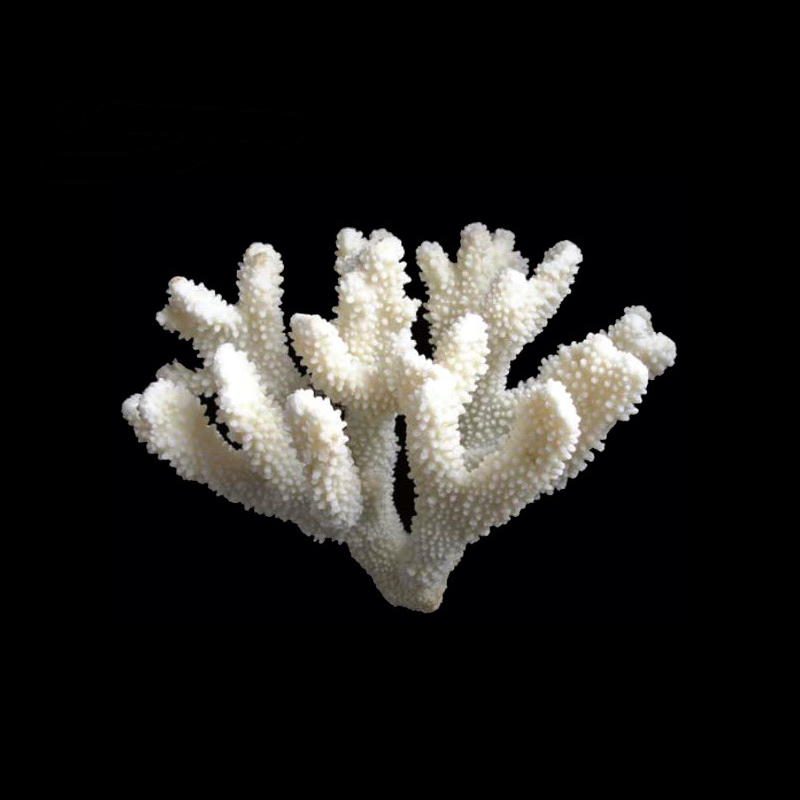
- Advanced protective gear designed specifically for reef environments
- Eco-friendly sunscreens that don’t harm coral when washed off swimmers
- Improved first aid kits tailored for marine injuries
- Research into coral-derived antimicrobial compounds for wound treatment
These advancements aim to make ocean activities safer for both humans and marine life.
The Importance of Education in Coral Cut Prevention
Education plays a crucial role in preventing coral cuts and protecting marine ecosystems:
- Raising awareness about coral reef ecology
- Teaching proper ocean safety and etiquette
- Informing visitors about local marine protected areas
- Promoting sustainable tourism practices
By fostering a deeper understanding of coral reefs, we can encourage more responsible behavior and reduce the incidence of coral cuts.
Long-Term Health Implications of Coral Cuts
While most coral cuts heal without complications, some can have long-term health effects:
- Chronic pain or sensitivity at the injury site
- Keloid or hypertrophic scarring
- Potential for recurring infections
- Rare cases of systemic reactions to coral toxins
These potential outcomes underscore the importance of proper initial treatment and ongoing care for coral cuts.
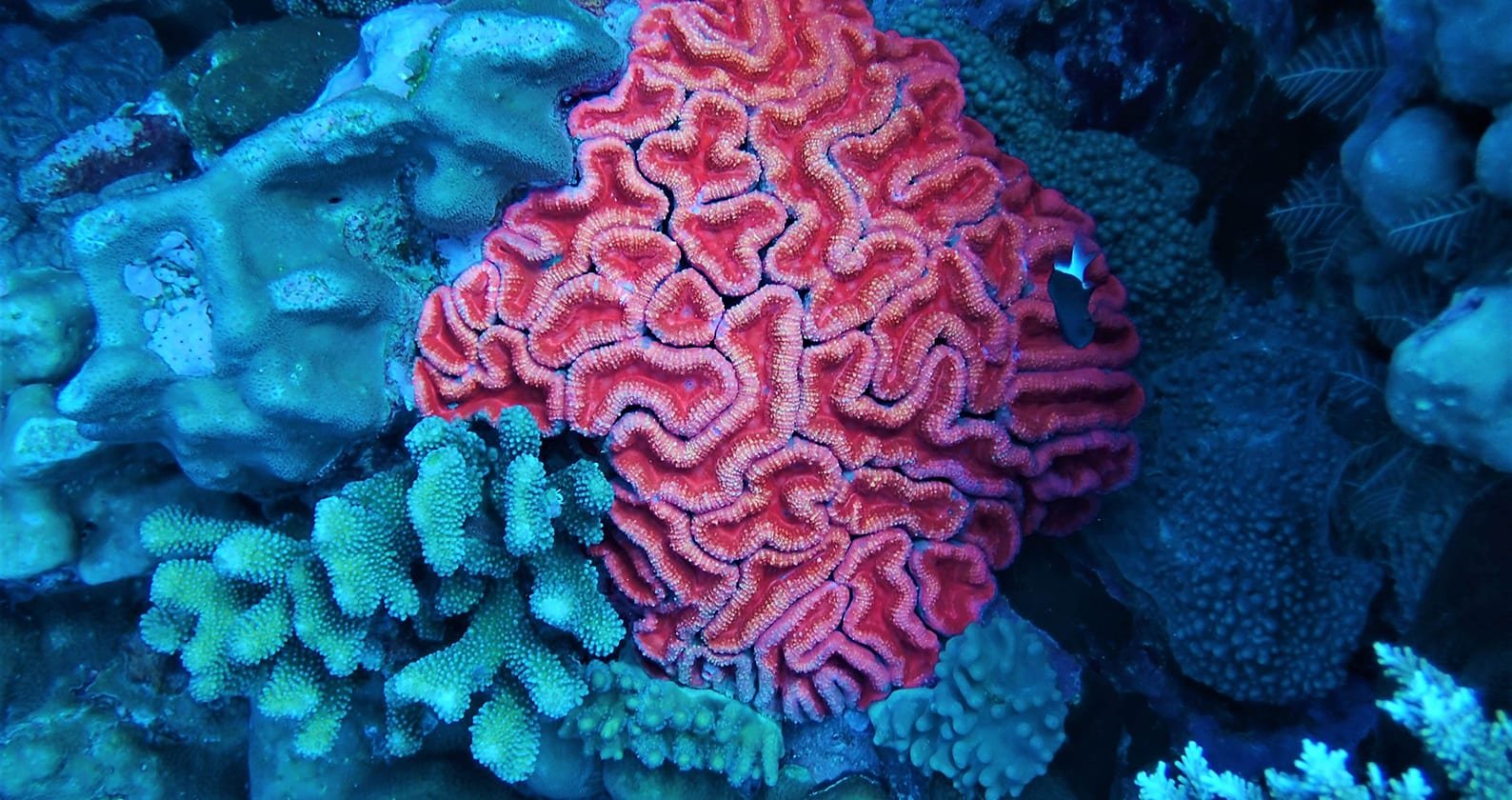
The Psychology of Ocean Safety: Overcoming Fear After a Coral Cut
Experiencing a coral cut can have psychological impacts on ocean enthusiasts:
- Developing fear or anxiety about returning to the water
- Increased stress during ocean activities
- Potential avoidance of marine environments
Addressing these psychological aspects is important for individuals to continue enjoying ocean activities safely and confidently.
Global Perspectives on Coral Cut Management
Approaches to coral cut prevention and treatment can vary around the world:
- Different medical protocols in various coastal regions
- Cultural practices influencing wound care methods
- Varying levels of awareness and education about coral risks
- Diverse regulations governing interactions with marine environments
Understanding these global perspectives can help travelers better prepare for and respond to potential coral injuries in different locations.
The Role of Technology in Coral Cut Prevention
Emerging technologies are playing an increasing role in preventing and managing coral cuts:

- Smartphone apps providing real-time information on reef conditions
- Wearable devices that alert users when they’re too close to coral
- Advanced imaging techniques for better wound assessment
- AI-powered systems for predicting high-risk areas
These technological advancements offer new tools for both prevention and treatment of coral cuts.
The Future of Coral Conservation and Human Interaction
Looking ahead, the relationship between humans and coral reefs continues to evolve:
- Development of more sustainable tourism models
- Advancements in coral restoration techniques
- Increased global cooperation on marine protection
- Integration of virtual reality for coral education and experience
These developments aim to balance human enjoyment of marine environments with the critical need to protect and preserve coral ecosystems for future generations.
Coral Cut Research: Current Studies and Future Directions
Ongoing research is expanding our understanding of coral cuts and their implications:
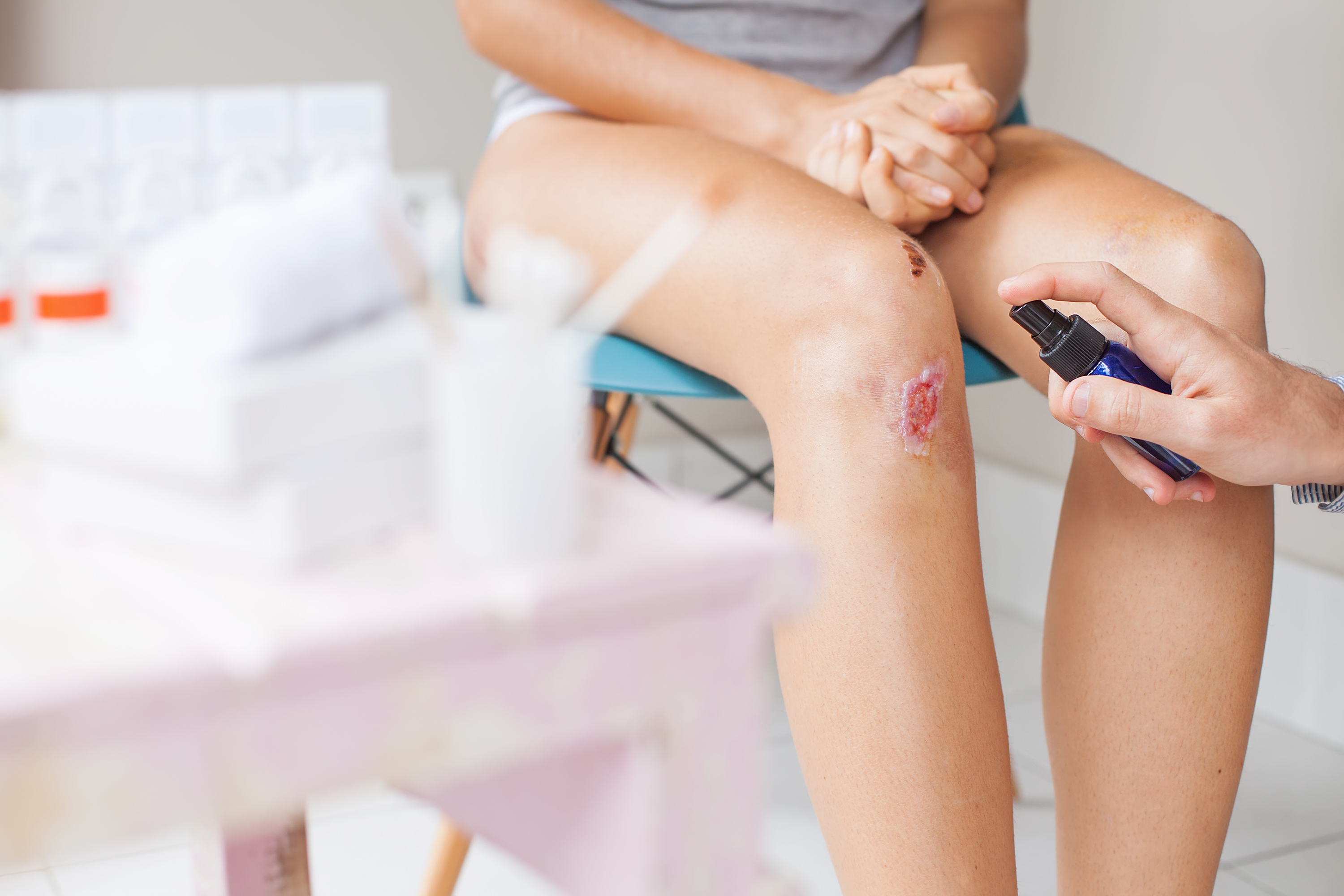
- Studies on the long-term effects of coral toxins on human health
- Investigations into coral-derived compounds for medical applications
- Research on improving coral cut healing and scar reduction
- Ecological studies on the impact of human-coral interactions
This research not only improves our ability to treat coral cuts but also deepens our understanding of the complex relationship between humans and coral reefs.
Reef Wounds 101: What To Do If You’ve Been Cut By Coral
California has nearly 840 miles of coastline for residents to enjoy sailing, swimming, and (of course) surfing. In Newport Beach, surfers don’t have to worry much about coral reefs. In fact, the state’s closest coral reefs are located on the tip of the Baja Peninsula. Still, if you’re willing to do a fair amount of traveling to catch some great waves, you might require wound treatment for reef-related lacerations at some point.
Reef wounds can be extremely serious and require immediate attention. If you don’t treat it right away, you’ll likely need infection care. You may even need to see your doctor about getting stitches if it’s a particularly deep wound. Let’s take a closer look at the proper care methods this type of beach injury and the potential dangers you should know about.
Why are reef wounds such a big deal?
A reef wound can start out as just a little scrape, but it can easily require immediate walk in treatment at your local clinic. That’s because with virtually any reef cut, there’s bound to be bits of coral stuck in the wound. Even tiny pieces of coral can result in pain and infection. In addition, some types of coral are actually toxic. Some surfers have died from reef wound infections that have spread throughout their entire body due to septicemia. Whether or not you think your cut is major, you should head to a nearby clinic for walk in treatment sooner rather than later.
That’s because with virtually any reef cut, there’s bound to be bits of coral stuck in the wound. Even tiny pieces of coral can result in pain and infection. In addition, some types of coral are actually toxic. Some surfers have died from reef wound infections that have spread throughout their entire body due to septicemia. Whether or not you think your cut is major, you should head to a nearby clinic for walk in treatment sooner rather than later.
What should I do if I’ve sustained a cut like this?
You should first clean the area with soap and water. If you’re experiencing pain from coral toxins, you may want to flush the area with vinegar. Should you have access to a sterile syringe, you may want to pressure wash the area to remove debris and bits of coral, if possible. However, this is usually the point you should visit your doctor, particularly if the wound is very deep. Your physician will likely advise you use an antibiotic ointment on the wound (that is, if you don’t require stitches) and will probably prescribe antibiotics to prevent infection.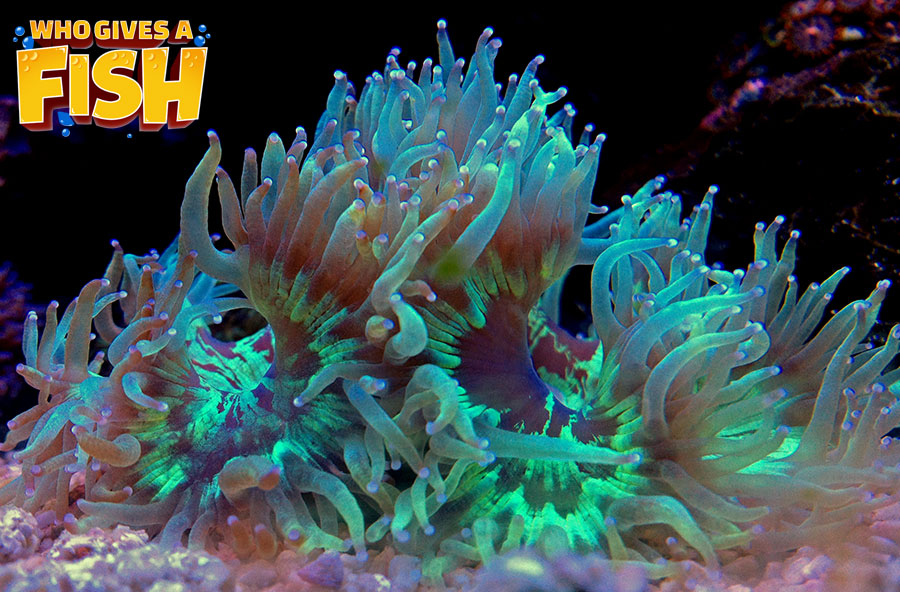 You may also want to take over-the-counter pain medications to provide additional relief. You should keep an eye out for swelling, redness, or blistering on the wound, as these are signs of potential infection that need to be addressed right away.
You may also want to take over-the-counter pain medications to provide additional relief. You should keep an eye out for swelling, redness, or blistering on the wound, as these are signs of potential infection that need to be addressed right away.
Can I surf with my reef cut?
While you may be tempted to tough it out and get right back in the water, doing so will increase your risk of infection. If you don’t want to make another trip to your clinic for walk in treatment, you should wait until your wound is fully healed before getting back up on the board. An especially deep cut might take longer to heal, but waiting is the best way to ensure your safety. However, you should seek additional treatment if your wound doesn’t seem to be healing properly.
Surfing is one of life’s greatest joys, but getting a coral cut can be a real wipe out. It’s vital that you seek out treatment right away; otherwise, you may not be back out in the ocean for a long time to come.
How to Treat Coral Cut Scars | Biodermis.
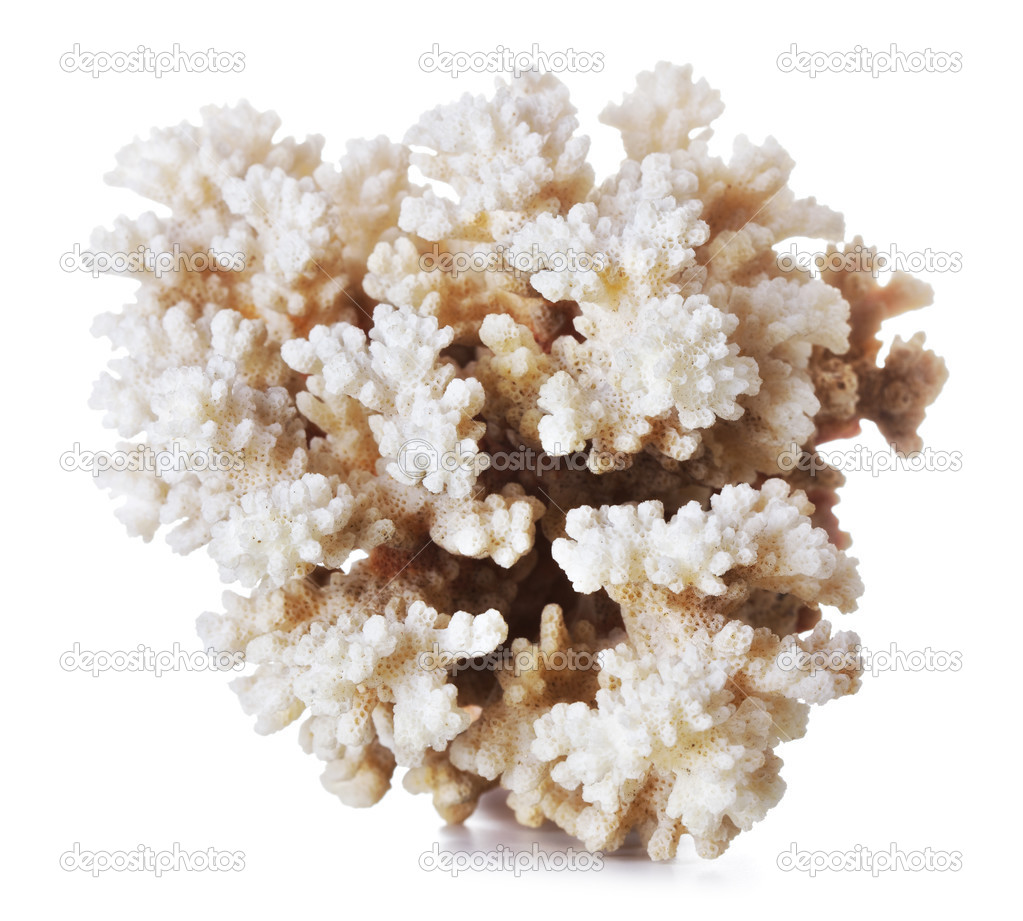 com
com
With summer fast approaching and people planning their family trips to the beach, it’s important to prepare for any accidents that may happen along the way. One of the most common ocean injuries that occur during swimming, surfing, or scuba diving are cuts from coral reefs. Coral cuts can be particularly dangerous because they have a high risk of becoming infected due to pieces of the coral’s exoskeleton getting stuck in the wound. A coral cut should be treated immediately by first being cleaned out and then covered with a bandage or gauze. If the wound gets infected, antibiotics may be needed to assist in recovery. In some cases, coral cuts can lead to scarring. Luckily, with proper wound care and the right scar management products, you can significantly reduce the scarring that results from coral cuts.
Continue reading to learn more about coral cuts and how you can be prepared in case one of these accidents happens on your summer vacation.
Being mindful of coral
When people go scuba diving to explore the vast underwater ecosystems that live near ocean coasts around the world, they may come across a beautiful array of coral.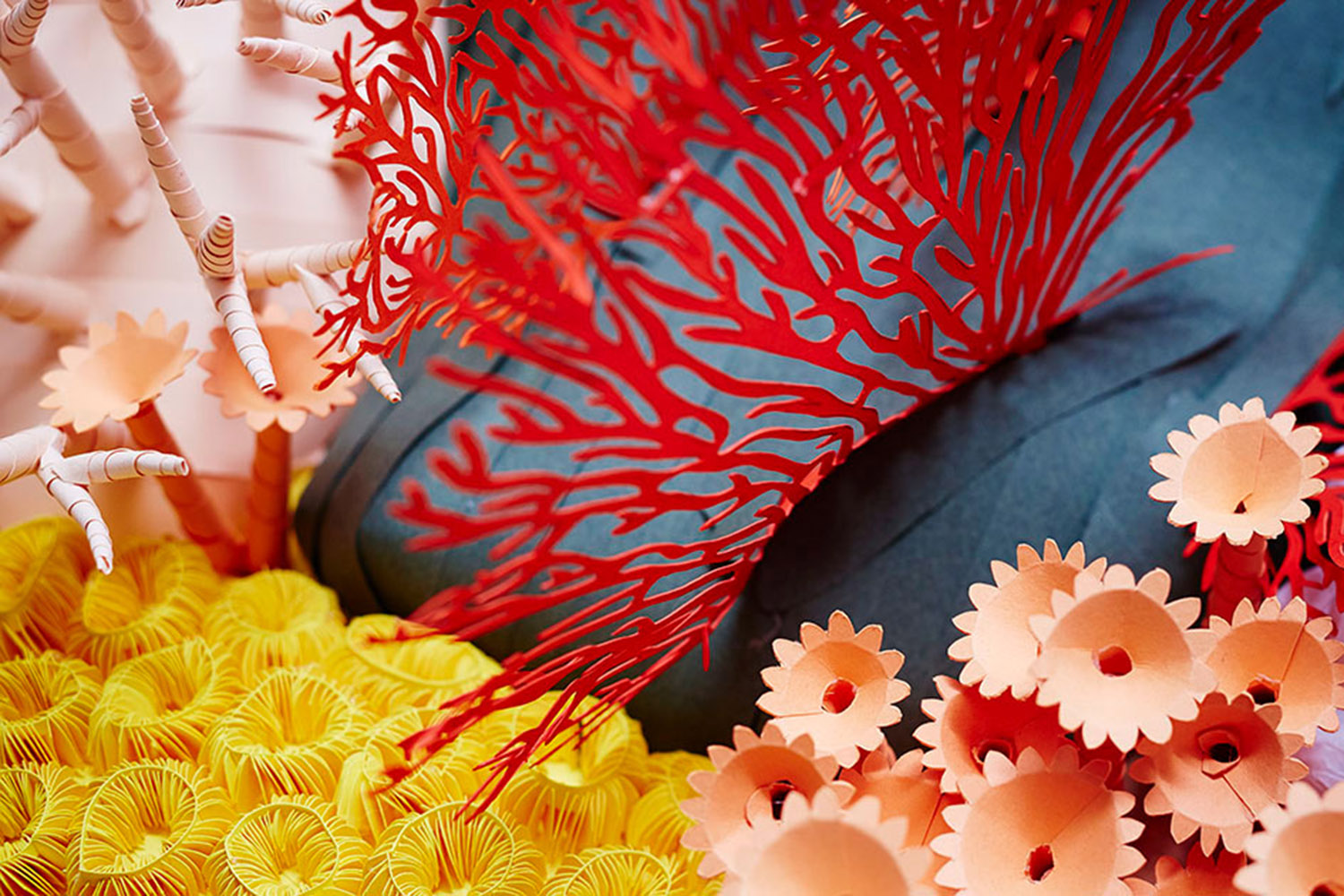 What people usually see are the colors and shapes of the coral’s exoskeleton (hard outer body). A coral’s exoskeleton is often hard and pointy, making it a good defense mechanism against marine predators. The inside of coral consists of the actual animal called a polyp. A polyp is an invertebrate (without a spine) with a soft, squishy body and tentacles. Coral are biologically related to jellyfish and sea anemones. Without their hard exoskeletons, coral would be an easy meal for most predatory fish swimming in the ocean. Sadly, due to climate change and human activity, many coral reefs around the world are dying off. That’s why it’s so important to take precautionary measures and preserve these beautiful ecosystems for future generations to enjoy.
What people usually see are the colors and shapes of the coral’s exoskeleton (hard outer body). A coral’s exoskeleton is often hard and pointy, making it a good defense mechanism against marine predators. The inside of coral consists of the actual animal called a polyp. A polyp is an invertebrate (without a spine) with a soft, squishy body and tentacles. Coral are biologically related to jellyfish and sea anemones. Without their hard exoskeletons, coral would be an easy meal for most predatory fish swimming in the ocean. Sadly, due to climate change and human activity, many coral reefs around the world are dying off. That’s why it’s so important to take precautionary measures and preserve these beautiful ecosystems for future generations to enjoy.
Snorkelers and scuba divers shouldn’t swim too close to coral; the hard, spiny exoskeletons can rip through swim gear and puncture skin. Coral reefs are also home to many aquatic animals so it’s advised not to disturb these natural habitats—you may awaken something even scarier (like a moray eel). Some species of coral contain nematocysts which are specialized cells with barbed threads that contain poison. These poisons are usually not deadly but they can cause extreme pain to the victim—just another reason to stay away from coral! If you are cut by a coral while swimming or scuba diving, you should get out of the water immediately to avoid exposing your open wound to pathogens floating in the water.
Some species of coral contain nematocysts which are specialized cells with barbed threads that contain poison. These poisons are usually not deadly but they can cause extreme pain to the victim—just another reason to stay away from coral! If you are cut by a coral while swimming or scuba diving, you should get out of the water immediately to avoid exposing your open wound to pathogens floating in the water.
Clinically-proven scar therapy
If you do sustain a coral cut that penetrates the dermis (middle) layer of skin or deeper, scarring is likely to follow. Wound infection, if it occurs, can lead to a delayed skin repair response and cause abnormal scarring in the future. To reduce scarring, it’s advised to use topical silicone gel recommended by most surgeons and dermatologists today. Topical silicone should be applied as soon as your wound has healed, so long as there’s no more bleeding or scabbing. If you received stitches for your wound, they should be fully dissolved or removed prior to using topical silicone.
Medical silicone works through the mechanisms of dermal hydration and collagen regulation. By fully encapsulating the scar bed, moisture is retained at the site, creating an optimal environment for scar healing. This perfect environment, otherwise known as homeostasis, normalizes collagen synthesis, which is often overproduced when the skin is damaged, leading to raised, discolored scars. When the collagen is brought to a normal level with the help of silicone, scars will heal in a more desirable way by blending into the surrounding healthy tissue. Silicone products can be purchased without a prescription through your physician or online at Biodermis.com.
Biodermis is an innovative market leader with 30 years of expertise in the medical silicone industry. Visit Biodermis.com today to explore a complete range of scar management and post-operative care solutions.
PHYSICIANS AND MEDICAL PROFESSIONALS: REFER OR RESELL?
Biodermis offers custom tailored referral programs designed to simplify and reduce the cost of your patients’ post-op care. Additionally, we offer professional pricing if you opt to retail our products. Give us a call at 800.322.3729, and we will be happy to provide additional details on these programs.
Additionally, we offer professional pricing if you opt to retail our products. Give us a call at 800.322.3729, and we will be happy to provide additional details on these programs.
Coral Scrapes and Cuts – Divers Alert Network
Cuts and scrapes are the most common injuries incurred by divers and snorkelers. DAN receives about one inquiry a week related to someone who has come into contact with coral. A burning sensation, pain and itching are common and may also be accompanied by a rash. These injuries can have a latent evolution and take weeks or months to heal, confusing both patients and clinicians.
Mechanisms of Injury
Soft living tissues cover the surface of corals. In the case of stony corals, the rigid (abrasive) structure underneath makes the coral’s soft tissue easy to tear and get into the scrape or cut. Foreign material can prolong the wound-healing process since the different antigens and substances cause an acute inflammatory process and infection. Cuts and scrapes from sharp-edged coral and barnacles tend to fester and may take weeks or even months to heal. Granulomas can form if debris from the original wound remains in the tissue. The body attempts to remove it, resulting in an itchy rash or papule (small, raised, tender bump) that lasts for some time before the body eliminates it.
Cuts and scrapes from sharp-edged coral and barnacles tend to fester and may take weeks or even months to heal. Granulomas can form if debris from the original wound remains in the tissue. The body attempts to remove it, resulting in an itchy rash or papule (small, raised, tender bump) that lasts for some time before the body eliminates it.
While most “raspberries” generally heal quickly, skin abrasions from a marine environment can sometimes be more challenging to treat than those we get from outdoor activities such as baseball or bicycling. Whether it is a coral, a rock or a wreck, they all share a common factor: They are covered by living marine organisms, which makes coral cuts and scrapes unique.
Manifestations
The extent of the reaction depends on the presence and amount of toxins, the size and location of the abrasion and the pre-existing sensitivity of the injured person. The most common manifestations are a burning sensation, pain and itching. A rash may accompany the injury if the coral is a hydroid, such as fire coral.
A rash may accompany the injury if the coral is a hydroid, such as fire coral.
Most animals of class Hydrozoa become hydroids as a life stage. They are predominantly colonial, and while most of them are marine creatures, you can find a few species in freshwater environments.
Fire corals are cnidarians, so they contain nematocysts. Touching them with a simple rub can cause mechanical activation and envenomation. The manifestation is usually blistering, which typically appears a few hours after contact. They typically resolve in a few days, but it is quite common for these injuries to relapse within a week or two after what seemed to be healing progress. This delayed reaction is typical of these types of envenomations.
Prevention
When underwater, try to avoid contact with coral or any other living creature. Whenever possible, wear a wetsuit or dive skin to protect yourself if you are accidentally pushed into coral by another diver or a current.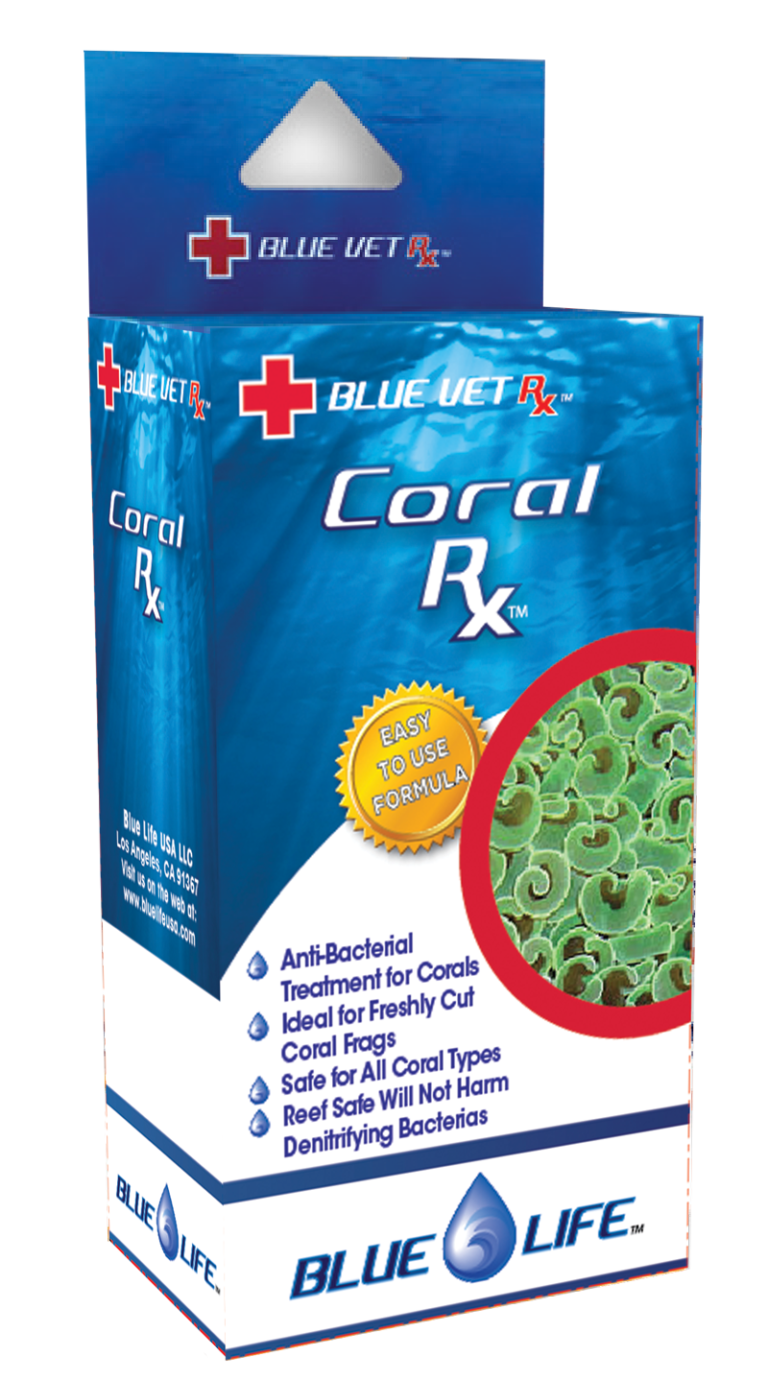 Ocean divers should consider a marine animal first aid kit for their travels. Ready supplies will speed up the time to properly administer first aid for injuries. Additionally, for divers who want to learn more about the various marine life injuries, there are courses in marine life identification, first aid courses and a variety of books and publications available.
Ocean divers should consider a marine animal first aid kit for their travels. Ready supplies will speed up the time to properly administer first aid for injuries. Additionally, for divers who want to learn more about the various marine life injuries, there are courses in marine life identification, first aid courses and a variety of books and publications available.
First Aid
- Scrub the cut vigorously with soap and water, and then flush the wound with large amounts of water.
- Flush the wound with a half-strength solution of hydrogen peroxide in water. Rinse again with water.
- Apply a thin layer of antiseptic ointment, and cover the wound with a dry, sterile and non-adherent dressing. If you have no ointment or dressing, you can leave the wound open.
- Clean and re-dress the wound twice a day.
- If the wound develops a crust, use wet-to-dry dressing changes. Put a dry sterile gauze pad over the wound and soak it with saline or a diluted antiseptic solution (such as 1% to 5% povidone-iodine in disinfected water).
 Allow it to dry then rip the bandage off the wound. The dead and dying tissue should adhere to the gauze and lift free. The tissue underneath should be pink and may bleed slightly but should be healing. Change the dressings once or twice a day. Use wet-to-dry dressings for a few days or until they become non-adherent. Then resume the regular wound dressing described above.
Allow it to dry then rip the bandage off the wound. The dead and dying tissue should adhere to the gauze and lift free. The tissue underneath should be pink and may bleed slightly but should be healing. Change the dressings once or twice a day. Use wet-to-dry dressings for a few days or until they become non-adherent. Then resume the regular wound dressing described above. - Look for any signs of infection: extreme redness, red streaks on the extremity, pain, fever, pus or swollen lymph glands. If you have any, consult a qualified health professional about starting an antibiotic. A possible Vibrio bacteria infection can cause illness and even death in someone with an impaired immune system (e.g., from AIDS, diabetes or chronic liver disease).
- Watch for coral poisoning, which can occur if abrasions or cuts are extensive or from a particularly toxic species. Symptoms include a wound that heals poorly or continues to drain pus, swelling around the cut, swollen lymph glands, fever, chills and fatigue.
 If you have these symptoms, see a physician.
If you have these symptoms, see a physician.
Complications
The most frequent complications from non-stinging coral scrapes are inflammation (which leads to poor healing) and less commonly a secondary infection. Proper wound cleaning is crucial. If fire coral is the culprit, then a diluted acetic acid solution, such as household white vinegar, is a reasonable topical decontaminant and should be used as a soak to reduce the pain. Immersion in hot water can reduce the symptoms. Hot water is ideal, but you can use instant hot packs, cold packs or ice packs. Provide symptomatic treatment for the inflammatory response. Steroid creams are rarely helpful, and they can prolong a skin infection. If the inflammation is severe, you may administer systemic steroids in a moderate, tapering dose under the supervision of a trained medical provider. Oral antihistamines can sometimes help reduce the itching or burning sensation.
Possible Complications of an Old Problematic Wound
It is not uncommon for divers to contact DAN concerned about a minor skin abrasion on their hands, knees or elbows that happened months ago and has not healed despite proper care.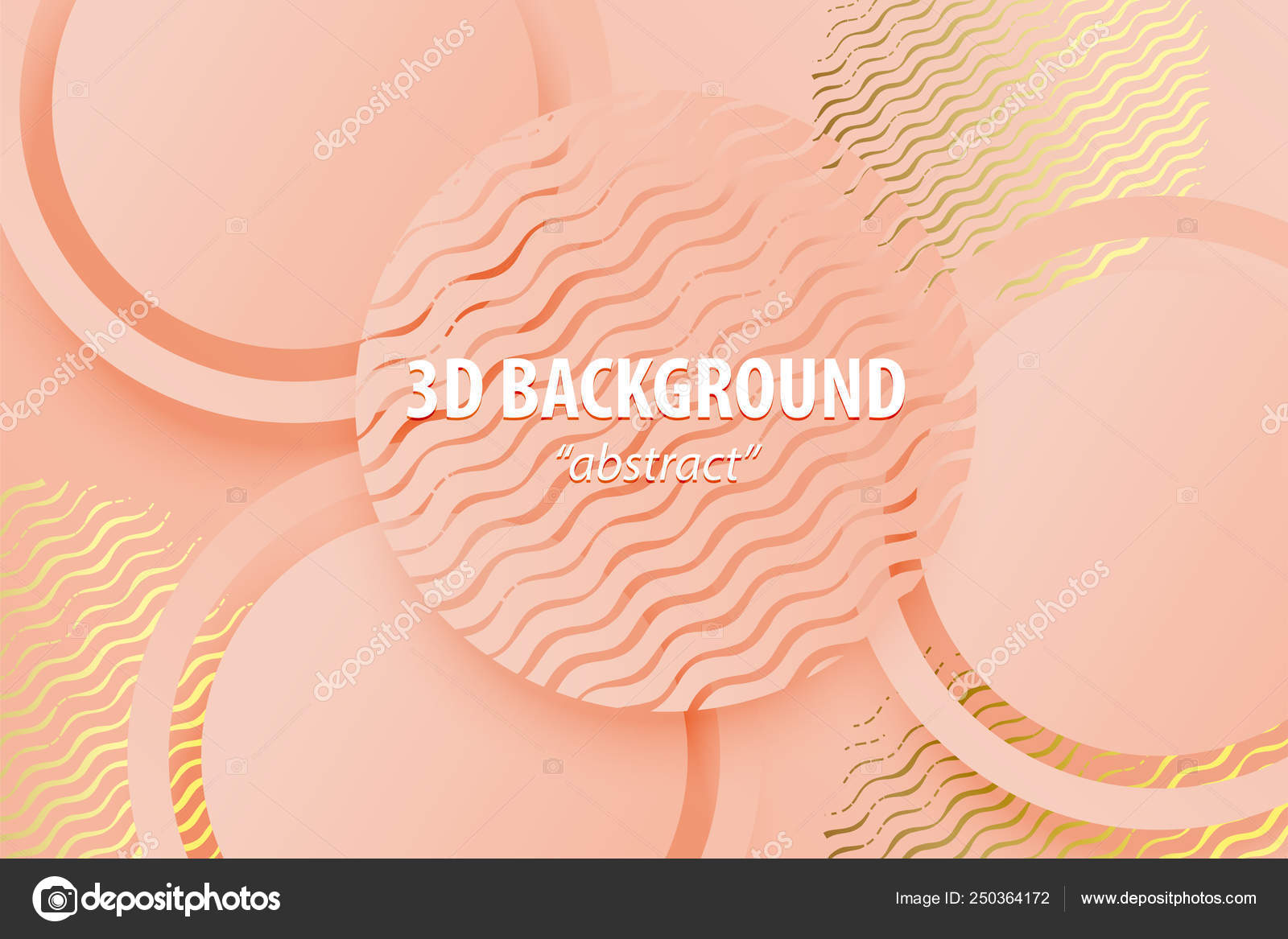 These chronic wounds often have a red and bumpy appearance, occasionally develop a crust and are usually painless. If common antibiotic ointments do not help, divers wonder if the cause may be a marine-specific pathogen.
These chronic wounds often have a red and bumpy appearance, occasionally develop a crust and are usually painless. If common antibiotic ointments do not help, divers wonder if the cause may be a marine-specific pathogen.
Divers with an open wound, even a small cut or scrape, are at risk for skin infections. When an old problematic wound fits the descriptions above, it might have become infected with an opportunistic pathogen known as Mycobacterium marinum. Despite the name there are no marine-specific pathogens that affect humans. Some infections are more common in aquatic environments. M. marinum is responsible for a condition commonly known as fish tank granuloma, or aquarium granuloma.
The red and bumpy nodules, no larger than a centimeter, are granulomas — inflammatory immune cells trying to wall off the pathogen. Granulomas are usually isolated but can sometimes appear in small clusters. They are not necessarily painful. There may or may not be discharge from the wound.
Characteristics of
M. marinum That Affect Healing
- The pathogen is opportunistic. It causes infection only in the right conditions (environmental and patient-related), so it is often not considered as a potential culprit.
- It likes cooler temperatures, which is why these wounds tend to flourish in areas with lower body temperatures such as hands, knuckles, elbows and knees.
- Only specific antibiotics work, so the typical antibiotic treatments are usually unsuccessful.
- The life cycle is slow, which means treatments last a long time. Sometimes patients will abandon what could have been a successful treatment or doctors may look for other potential explanations for the symptoms.
- It requires specific culture media that a doctor would not ask for unless they suspected this pathogen. Standard culture results are often negative, which delays the diagnosis.
Allow your doctor to examine the wound and follow their standard procedures. The doctor will probably ask you how it happened or when it started. Tell them about the superficial abrasion in a marine environment. You may want to ask specifically if M. marinum could be the cause. Your doctor does not need dive-specific medical knowledge for this type of issue.
The doctor will probably ask you how it happened or when it started. Tell them about the superficial abrasion in a marine environment. You may want to ask specifically if M. marinum could be the cause. Your doctor does not need dive-specific medical knowledge for this type of issue.
Fitness to Dive
Always take care of wounds and clean them thoroughly no matter the severity. The skin is our most effective and efficient means of immunological defense. A compromised wound can get seriously infected.
As a rule, treat wounds properly and let them heal before diving. This is particularly important before traveling to a remote location or one with limited local medical care capabilities. A skin lesion with the potential for infection might warrant a more conservative decision to stay ashore if you have such a trip planned.
Chronic skin lesions require specific consultation with your physician team before diving. Your doctor may prescribe treatment or a protective covering to prevent skin breakdown.
How to Treat Reef Rash, Coral Reef Cuts & Barnacle Cuts From Surfing
We’ve seen it a thousand times or more: an empty a-frame barrel breaking with nary a drop of water out of place, and not a soul in sight. Crystal-clear water, and perhaps a white-sand beach and a palm tree in the background. It could be somewhere in Indonesia, or maybe the South Pacific. We pin this image to our bedroom wall, or set it as our desktop background because, well it’s our holy grail—a remote reefbreak, far from crowds and better on an average day than the best our local has to offer. But below the surface lurks something less ideal, something that is dangerously overlooked: the reef.
Those who’ve experienced such will already know, but for the rest let us point out that the same submarine geology that lends itself to producing some of the world’s greatest waves—Cloudbreak, Padang Padang, Teahupoo, Pipeline—also holds the potential to, for lack of a better term, seriously jack you up. But don’t take our word for it. Paddle out at one of the above spots, or any other of the dozens of tropical reefbreaks that surfers have fetishized over the years, and you’ll come to know what we mean.
Photo: Jeremiah Klein
Those perfect waves? They’re perfect thanks to thousands of years of ocean energy grinding into a living reef—energy that doesn’t relent if an unwitting surfer happens to find themselves caught in the mix. And that crystal-clear water? It’s not quite as tranquil when revealing a minefield of über-sharp coral that sits just below the surface, waiting for you to catch a rail or get hung up in the lip.
Photo: Jeremiah Klein
So, with this in mind, we thought it might be valuable to offer up a couple of tips on what to do if you find yourself on the receiving end of a coral-head kiss. We’ve all heard stories of MacGyver-type solutions (lime, iodine, tequila, etc.), but being that we’re surfers rather than medical professionals, we decided it best to defer to the experts on this topic. Here’s what the reputed Dr. Dave Jenkins had to say on the subject:
Surfline: what is currently the best medical practice for coral cuts? And how can the traveling surfer deal with them?
Dr. Dave Jenkins: Coral contains a range of very nasty and sometimes unusual bacteria and toxins. The tiny coral cysts themselves are capable of entering wounds and getting lost in the tissue to, not only cause wound healing delay, but pain and recurrent swelling for a long time.
The first major rule for coral cuts is thorough, extended cleaning. For longer than what most surfers would describe as adequate–a full 10 minutes. Don’t do what I have seen 100 times: “Oh, that’s long enough and good enough.” It’s probably not. Do it all again.
Here are the steps you should take:
- Remove all dead skin with a sharp, clean pair of scissors that have been boiled to kill bacteria. (Bacteria love to grow in, under, and around dead skin.) Anesthetizing around the wound is a good idea, if that’s what it takes to clean it well. Clean it with soap and fresh water and a soft, sterile brush, if required. Flush with a mixture of one-half water and one-half hydrogen peroxide to remove coral dust and then flush with fresh water. Don’t grab the bottle and pour it on the wound, dilute it. Full strength peroxide might delay the healing process. Then use clean water to flush it under pressure and very thoroughly for five minutes.
- If the wound stings badly, rinse it with acetic acid (vinegar) or isopropyl alcohol and flush with water again.
- Rinse daily and apply Bacitracin (an antibiotic) ointment three to four times per day followed by the use of a non-adhering dressing.
- If a coral-induced laceration is severe, it should be closed with adhesive strips rather than sutures (stiches) if possible, as sutures themselves act as foreign bodies and harbor bacteria.
- Oral antibiotics are usually recommended to prevent infection. If infection develops, continue antibiotics for at least five days after all signs of infection have cleared.
- Raise the limb. Swelling, even if you can’t see it, can delay healing especially in areas of poor circulation like the shin-bone. Keep your arm or leg up to the level of your heart or higher in the first few hours.
- Pain may be relieved with one or two acetaminophen (Tylenol) every four hours and/or one or two ibuprofen (Motrin, Advil) every six to eight hours.
- Watch out for infection indicated by red spreading edges of the wounds that can lead to large red areas spreading up your limbs called cellulitis, which can lead to fever, severe illness and even death. If you see this, you need urgent medical help. Do not delay even if you are in a remote place — you will need antibiotics or change to a different antibiotic if you’re on one already. Whatever you do, don’t do the macho “it will be ok” thing. Get some medical advice even if it’s on the phone to work out which antibiotic is best and assess your condition if you’re getting ill and febrile.
So, when can you go surfing again?
When the wound has fully sealed and healed. But this is very dependent on the risks you want to take. We’ve all heard of sea ulcers — recurrent saltwater exposure is the cause and delays healing. The sea is not a sterile environment, especially in the tropics, and bacteria will enter your wound and cause havoc. If it’s minor and you’ve cleaned it thoroughly then no one is probably going to stop you if your paying $200/day on a charter boat. But make sure you clean, dry, apply antibiotic cream and new waterproof dressing after every surf. And hope for the best as you’ve just disobeyed my advice…as I knew you would.
Don’ts
-Don’t use fully-strong iodine/peroxide. Dilute it.
-Save the limes for the gin or the beer, as they’re too strong and will damage the wound.
-Popular Chinese tinctures may contain Mercurochrome, a known toxin that accumulates in your body. No one is really sure if tinctures cause harm, but why take the risk when the above guidelines are better and proven to be safe.
-And, lastly, don’t take off on large waves breaking in shallow water unless you’re capable of making them. Prevention is better than cure.
Well, there you have it, folks. We hope you don’t find yourself in need of this information, but if you do, at least you’re prepared to act appropriately. And now, here’s a couple of fun-to-watch-but-don’t-try-these-at-home-type clips for your viewing pleasure:
Ouch.
Super ouch.
Um . . . what?
*An earlier version of this article appeared on Surfline.com on June 28, 2011
Know before you go
Start your 15-day free trial to Surfline Premium and get access to the world’s best forecast team.
Snorkel First Aid: How to Treat Coral Cuts
If you make it a point not to disturb coral to the best of your ability, following the snorkeling etiquette rules, then you should avoid most injuries from coral. However, every once in a while the surf or water have its own plan. If you’re close to coral, checking out a fish or particular growth, then the surf can push you towards it. If you push yourself away or brace yourself then you can get cut. I have been in situations where the surf has actually pushed over the coral and my belly and legs were scraped. Not good.
Coral cuts and scrapes are not run of the mill, though. Certain care has to be given to them to make sure that they are not infected and that they heal well.
An Overview
Marine polyps secrete a hard calcareous exoskeleton that is coral. These exoskeletons are often formed into sharp, rock-like pieces that are colorful. There are many different types of corals and coral reefs will often have many different species within it. These occur in tropical and subtropical waters and climates. Because of the way coral is formed they can cause injury (coral cuts and abrasions) that may seem harmless at first but can soon develop blisters and infections to the wounded area and the rest of the body. Precise care is always needed for coral cuts.
Symptoms of Coral Cuts and Abrasions
- Coral cuts can get itchy, red and inflamed. If not treated properly then they can fester.
- Redness may spread from the wound to the surrounding skin. This may be a spreading infection known as cellulits.
- Cellulitis is an infection of the skin and the soft tissue surrounding the skin that results from bacteria from the coral to invade the area.
- Red streaks that move up and down an extremity (finger, toe, hand, foot, arm, leg). May from a blister or the wound may drain pus.
Treating a Coral Cut or Abrasion from Snorkeling
- Clean vigorously (scrub as hard as the pain permits) and then flush with fresh water as soon as possible after the coral cut.
- If it is stinging then you can rinse it with a from of acetic acid. Most people turn to vinegar. Or you can clean it with isopropyl alcohol. This helps to reduce the effect of irritable toxins from the coral.
- Flush with 1/2 fresh water and 1/2 hydrogen peroxide
- Rinse daily and then apply an antibiotic such as bacatracin.
- If it eases you, you may take oral antibiotics to prevent or fight an infection. See a doctor for a prescription of anti-biotics.
- If you don’t notice signs and symptoms of an infection than over-the-counter (OTC) steroid ointment will help with redness, itching and stinging.
- Treat pain with acetaminophen (Tylenol) and swelling with ibuprofen (Motrin or Advil) a couple times per day. You may also use naproxen, found in Aleve.
Note: Patients that are alcoholics have a tendency to develop bacterial infections by Vibrio spp that can be very aggressive and dangerous (life-threatening) in a short time-span. Any redness of skin that progresses rapidly with blisters moving up an extremity (arms or legs) toward the body should be considered a medical emergency, and will require IV antibiotics.
When to Seek Medical Care, Call an Ambulance or 911
Severe, deep cuts or if infection is present and the wound is not healing.
If you plan on using antibiotics a doctor should always be consulted.
Rapid occurrence of redness, blistering, especially in an alcoholic.
We Recommend this First Aid Kit in a Waterproof Dry Box:
The Chief Resident Presenting with a Coral Cut Injury: Infections From the Sea | 2001-01-01
CASE REPORT
By Marc A. Ciampi, MD,
and Andre N. Sofair, MD, MPH
A30-year-old previously healthy male pre-sented with pain in his left knee and left groin. Five days prior to presentation, he had scraped his exposed left knee against a large brain coral while snorkeling in the Caribbean, near the island of Aruba. He noted local erythema, slight pruritus, and a small abrasion. After irrigating the wound, the patient used topical antibacterial cream daily. He remained afebrile with no evidence of local or systemic complaints. He denied significant pain, increasing erythema, or wound drainage. On the day of presentation, the patient developed notable groin tenderness and mild left-sided lumbar pain along with increasing knee pain. He denied fever, chills, night sweats, or fatigue. He had no significant past medical history and was taking no medications. He had no known allergies and denied recent ingestion of shellfish.
The patient was afebrile with normal vital signs and general appearance. Physical examination of his knee was notable for the presence of a raised, slightly erythematous rash showing a dermatograph of brain coral, and a 2 mm abrasion with no significant drainage or fluctuance. The joint was normal with no evidence of effusion or inflammation. The left leg revealed tender inguinal lymphadenopathy without lymphangitis. Abdominal examination showed mild left upper quadrant and left costovertebral angle tenderness; a spleen tip was not palpated.
He was empirically started on an oral fluoroquinolone antibiotic, levofloxacin, to treat his soft tissue infection. Oral doxycycline was added one day later to ensure adequate coverage of various marine microorganisms. He was treated for 10 days with resolution of his groin tenderness and back pain after two days of therapy. Over three weeks, the rash resolved completely without complications.
Discussion
Contact with coral or “coral cuts” may produce significant and sometimes dramatic cutaneous reactions.1,2 Manifestations include localized erythema, urticara, and occasional pruritus.3 The local reaction can be a response to coral nematocysts, contamination of the wound site with microparticulate coral and calcium carbonate, possible bacterial infection, or toxin effects.
Although on a worldwide basis staphylococci and streptococci remain the most common causes of soft tissue infections, vibrios, and some Aeromonas spp. are virulent waterborne organisms that may infect wounds sustained in a marine environment.1-8Erysipelothrix rhusiopathiae, coliforms such as Escherichia coli, and Mycobacterium marinum, M. balnei, or Pseudomonas spp. are also capable of producing localized infections after exposure to salt water.6 Wound infections acquired in this environment may also be polymicrobial.7,9
Ecology and Epidemiology
The halophilic Vibrio spp. are naturally free-living aerobic inhabitants of marine environments. These organisms have been found in Europe, Asia, Australia, South America, and North America.10 In North America, they have been recovered from the waters of the Gulf coast, the entire East Coast from Florida to Maine, the California and Washington State coasts, and from the waters around Hawaii. Halophilic vibrios have been found in both water and marine sediments, adherent to plankton, or absorbed onto mollusks and crustaceans.11Vibrio spp. are taken up by filter-feeding molluscs such as oysters, clams, mussels, and scallops achieving concentrations as high as 106 bacteria per gram of oyster during periods of warm water temperatures. Bacteria are also found in the intestines of some estuarine fish, which may transport them between oyster beds or serve as a source of wound infections.12
Vibrio spp. reside in ocean water or marine estuaries within a wide range of salinity (1-34 parts per thousand). Organisms have been isolated from brackish lakes and even from the Great Salt Lake.13 A salinity greater than 25 parts per thousand has adverse effects on their survival.
Intolerant of cold conditions, Vibrio spp. thrive during the summer and fall months, but they may also survive the winter months in marine sediment.5,14-18Vibrio spp. are found in zones where there is decreased dissolved oxygen concentrations, possibly reflecting increased nutrient concentrations in such areas. Vibrios are rarely found in the open ocean, likely due to colder water temperatures, the absence of nutrients, the higher hydrostatic pressures, and the relatively higher salinity.18
Vibrio infections are acquired either by the consumption of contaminated food and water or through skin and soft tissue injuries.4 The primary food sources for acquisition are raw/undercooked oysters or other seafoods.4,19 In those with skin and soft-tissue infections, nearly all report prior recreational or occupational exposure to sea water or marine organisms.9
Clinical Presentations
Three major presenting clinical syndromes have been described for vibrios including gastroenteritis, soft tissue infection, and septicemia. There have been additional case reports of vibrio-associated otitis media, pneumonitis, keratitis, meningitis, and endometritis.4,13
Soft tissue infections caused by noncholera vibrios may present as one of two distinct clinical entities, primary vibrio cellulitis, or secondary cellulitis following primary bacteremia.4 Direct cutaneous inoculation from abrasions, lacerations, or puncture wounds may result in primary vibrio cellulitis. With the exception of V. cholerae O1, primary vibrio cellulitis has been associated with all known Vibrio spp.1,5,20-23 In hospitalized patients with vibrio wound infections, the majority are caused by V. vulnificus (43%), followed by V. parahaemolyticus (29%) and V. alginolyticus (18%). The case fatality for V. vulnificus was 11%, and for V. parahaemolyticus it was 5%.9
Wound infections range from mild, limited disease to rapidly progressive, necrotizing infections.9,10,13,19 Virulence may be related to the organisms’ capsular polysaccharide and lipopolysaccharide. Many vibrios also produce degradative toxins and enzymes. These include chitinases, which allow vibrios to colonize the exoskeletons of marine zooplankton, as well as hemolysins and metalloproteases, which break down tissues at the site of colonization. Vibrios also produce siderophores that scavenge iron from host transport proteins, transferrin and lactoferrin. This may account for the increased virulence of Vibrio spp. in patients with iron overload states.12
Cellulitis usually occurs within 24-48 hours but can occur as early as four hours, or as late as 12 days after exposure.20,24,25 Fever occurs in 45-80% of primary cellulitis cases.4 Infected wounds are usually erythematous or ecchymotic, swollen and notably tender with little to no purulent discharge.4,24 Vesicles or bullae with secondary necrotic centers and necrotizing fasciitis have also been described.9,12,16,24,26
Patients with a history of liver disease, renal disease, chronic illness or immunodeficient states are at considerably increased risk of generalized sepsis following cellulitis.4,9,19,20,27-30 In cirrhosis, it has been suggested that porto-systemic shunting may allow vibrios to bypass the hepatic reticuloendothelial system. Additionally, liver disease predisposes such patients to complement deficiencies, impaired chemotaxis, and phagocytosis.31 Iron overload states also contribute to fulminant vibrio infection. Increased bioavailability of free iron, found in patients with hemochromatosis, may stimulate bacterial growth and metabolism. In addition, iron overload may impair normal host phagocytic activity, increasing susceptibility to infections.12,31,32 Septicemia occurs in 15% of patients with primary soft tissue infections and contributes to the high case-fatality rates. In those with bacteremia, the rate is 32%; without hematogenous involvement, the case fatality rate is only 1%.9
Secondary cellulitis in the setting of primary septicemia associated with Vibrio spp. carries a 32-50% mortality rate.4,9,10,19,33 In these cases, there is usually a preceding history of having eaten raw/undercooked oysters or other seafood ingestion.4,19 These individuals develop generalized, metastatic, macular, or papular lesions in the setting of primary bacteremia. Culture-positive cutaneous lesions have been reported with bacteremia caused by V. vulnificus, V. cholerae non-O1, V. parahaemolyticus, and rarely V. alginolyticus.4,34
Treatment of Coral-related
Soft Tissue Infection
Local wound care should include soap and water, followed by aggressive irrigation and debridement with saline solution and hydrogen peroxide to remove foreign material from the site and prevent secondary infection or granuloma formation.35
Given the potential polymicrobial nature of coral-related infections, broad-spectrum antibiotics should be considered. For those with obvious cellulitis, or as a prophylactic measure in those with abnormal immune systems, antibiotics with a spectrum of activity against staphylococci and streptococci should be used. In addition, antibiotics that are effective against halophilic Vibrio spp. should be administered.
Vibrio spp. frequently produce beta-lactamases and are often resistant to various beta-lactam antibiotics. The beta-lactam inhibitor, sulbactam, does not completely render these organisms susceptible to ampicillin. They are often resistant to cephalothin, cefuroxime, and cefoperazone, but sensitive to cefotaxime, ceftazidime, aztreonam, and imipenem.
Although the fluoroquinolones, ofloxacin and norfloxacin, are effective against these organisms, ciprofloxacin appears to have the greatest activity with an MIC90 of approximately 0.25 mg/L. Trimethoprim/sulfamethoxazole is effective, as are the tetracyclines and chloramphenicol.36 For those with devitalized tissue or fasciitis, surgical intervention is indicated. This may be particularly important when dealing with infections caused by Vibrio damsela.16,21,37 (Dr. Ciampi is a Clinical Instructor in Medicine at Yale University and Dr. Sofair is an Assistant Clinical Professor of Medicine at Yale University with the Emerging Pathogens Program, New Haven, Conn.)
References
1. Patterson TF, et al. Vibrio alginolyticus cellulitis following coral injury. Yale J Biol Med 1988;61:507-512.
2. Brown CK, Shepherd SM. Marine trauma, envenomations, and intoxications. Emerg Med Clin North Am 1992;10:385-408.
3. Habif TP, Habie TP. A color guide to diagnosis and therapy. Clin Dermatol 1996;3:2005.
4. Blake PA, et al. Disease caused by a marine vibrio.
N Engl J Med 1979;300:1-5.
5. Morris JG, Black RE. Cholera and other vibrioses in the United States. N Engl J Med 1985;312:343-350.
6. Bateman JL, et al. Aeromonas hydrophilia cellulitis and wound infections caused by waterborne organisms. Heart Lung 1988;17:99-102.
7. Pien FD, et al. Bacterial flora of marine penetrating injuries. Diagn Microbiol Infect Dis 1983;1:229-232.
8. Kelly KA, et al. Spectrum of extraintestinal disease due to Aeromonas species in tropical Queensland, Australia. Clin Infect Dis 1993;16:574-579.
9. Hlady WG, Klontz KC. The epidemiology of vibrio
infections in Florida, 1981-1993. J Infect Dis 1996; 17:1176-1183.
10. Howard RJ, et al. Necrotizing soft-tissue infections caused by marine vibrios. Surgery 1985;98:126-130.
11. Limpert GH, Peacock JE Jr. Soft tissue infections due to noncholerae vibrios. Am Fam Physician 1988; 37:193-198.
12. Strom MS, Paranjpye RN. Epidemiology and pathogenesis of Vibrio vulnificus. Microbes and Infection 2000; 2:177-188.
13. Hill MK, Sanders CV. Localized and systemic infection due to Vibrio species. Infect Dis Clin North Am 1987;
1:687-707.
14. Oliver JD, et al. Distribution of Vibrio vulnificus and other lactose-fermenting vibrios in the marine environment. Appl Environ Microbiol 1983;45:985-998.
15. Linkous DA, Oliver JD. Pathogenesis of Vibrio vulnificus. FEMS Microbiol Lett 1999;174:207-214.
16. Yuen KY, et al. Fatal necrotizing fasciitis due to Vibrio damsela. Scand J Infect Dis 1993;25:659-661.
17. Penman AD, et al. Vibrio vulnificus wound infections from the Mississippi Gulf coastal waters: June to August 1993. South Med J 1995;88:531-533.
18. Joseph SW, et al. Vibrio parahaemolyticus and related halophilic vibrios. Crit Rev Microbiol 1982;10:77-124.
19. Klontz KC, et al. Syndromes of Vibrio vulnificus infections. Clinical and epidemiologic features in Florida cases, 1981-1987. Ann Intern Med 1988;109:318-323.
20. Howard RJ, Lieb S. Soft tissue infections caused by halophilic marine vibrios. Arch Surg 1988;123:
245-249.
21. Tang WM, Wong JW. Necrotizing fasciitis caused by Vibrio damsela. Orthopedics 1999;22:443-444.
22. Ien F, et al. Vibrio alginolyticus infections in Hawaii.
J Clin Microbiol 1977;5:670-672.
23. Porres JM, Fuchs LA. Isolation of Vibrio parahaemolyticus from a knee wound. Clin Orthop 1975; 106:245-247.
24. Johnston JM, et al. Vibrio vulnificus. Man and the sea. JAMA 1985;253:2850-2853.
25. Ho PL, et al. Necrotizing fasciitis due to Vibrio alginolyticus following an injury inflicted by a stingray. Scand J Infect Dis 1998;30:192-194.
26. Farina C, et al. Vibrio cholerae O2 as a cause of a skin lesion in a tourist returning from Tunisia. Journal of Travel Medicine 2000;7:92-94.
27. Brennt CE, et al. Growth of Vibrio vulnificus in serum from alcoholics: Association with high transferrin iron saturation. J Infect Dis 1991;164:1030-1032.
28. Stabellini N. Fatal sepsis from Vibrio vulnificus in a hemodialyzed patient. Nephron 1998;78:221-224.
29. Ali A, et al. Vibrio vulnificus sepsis in solid organ transplantation: A medical nemesis. J Heart Lung Transplant 1995;14:598-600.
30. Ko WC, et al. Infections due to non-O1 Vibrio cholerae in southern Taiwan: Predominance in cirrhotic patients. Clin Infect Dis 1998;4:774-780.
31. Hor LI, et al. Survival of Vibrio vulnificus in whole blood from patients with chronic liver diseases: Association with phagocytosis by neutrophils and serum ferritin levels. J Infect Dis 1999;179:275-278.
32. Bullen JJ, et al. Hemochromatosis, iron and septicemia caused by Vibrio vulnificus. Arch Intern Med 1991; 151:1606 -1609.
33. Chuang YC, et al. Vibrio vulnificus infection in
Taiwan: Report of 28 cases and review of clinical manifestations and treatment. Clin Infect Dis 1992;15:
271-276.
34. Bonner JR, et al. Spectrum of Vibrio infections in a gulf coast community. Ann Intern Med 1983;99:
464-469.
35. Rosson Cl, Tolle SW. Management of marine stings and scrapes. West J Med 1989;150:97-100.
36. French GL, et al. Antimicrobial susceptibilities of halophilic vibrios. J Antimicrob Chemother 1989; 24:183-194.
37. Bia FJ. On damsels and distress from a vibrio species. Travel Medicine Advisor Update 2000;10:31-32.
What Is a Coral Cut? (with pictures)
A coral cut is a physical injury sustained by coming into contact with the hard skeletons that make up the exterior of individual coral organisms, which make up coral reefs. Commonly, such a cut causes bleeding, pain, and swelling at the site. Cuts caused by coral can become infected and require medical care if they are not treated properly, especially if coral fragments, bacteria, proteins, or toxins from the organism remain in the wound. To avoid infection, an injured person should scrub the wound with soap and water immediately, then apply an antibiotic ointment and cover the wound with a bandage. It is important for individuals to seek immediate medical attention if they receive a severe cut, especially if the injury bleeds heavily, is to bone or other internal tissues, or develops into a festering ulcer or sore.
Coral and coral reefs are made up of thousands of tiny organisms called polyps. These polyps produce calcium carbonate, which hardens and forms the exterior skeleton. Coral reefs are mainly found in tropical and subtropical oceans and are popular destinations for swimmers, divers, and snorkelers. The surfaces and protrusions of these organisms are often sharp enough to cut skin and underlying tissue even if only brief contact occurs and even if a swimmer is wearing protective gear such as a wetsuit.
The most important thing after suffering a coral cut is for the injured person to make sure that the wound is cleaned thoroughly. Vigorous cleaning and scrubbing of the wound with a brush, soap, and water is recommended. Flushing the wound with plenty of fresh water also helps clean out any debris, and the person can also apply saline or an antiseptic solution to the injury. The application of acetic acid or isopropyl alcohol can help if there is a stinging sensation.
After thorough cleaning, the cut should be covered with a bandage. Rinsing the injury daily and applying antibacterial ointment three to four times a day can also help prevent infection. Over-the-counter pain medication, such as acetaminophen or ibuprofen, can be used for pain relief if needed. In some cases, coral cuts can lead to serious bacterial infections with increasing redness and tenderness around the wound. Oral antibiotics may be needed to treat the infection, and it is important for people who have signs of an infection to consult a healthcare professional to get the proper treatment.
90,000 coral jewelry – Jewelry articles, cutting methods, jewelry world, jewelry fashion | Jevel.ru
Jewelers value corals as much as mother-of-pearl and pearls, they are even called precious stones from the sea. Coral products have been created for many centuries, because they are amazingly beautiful, exotic and original. Coral jewelry is a classic product, most often coral beads are created, however, you can also find rings, earrings, pendants, bracelets, in which there are coral inserts.
Today, the world center for working with corals is the Italian city of Torr del Greco, which is located near Naples. Corals are also sold in their natural form, which is a fancy product in the form of original large pieces, openwork twigs and household items: boxes, dishes …, and in the form of jewelry.
Corals by themselves are not transparent, although at the edges they fantastically shine through, creating a unique play of light and shadow.Their color depends on organic impurities, there are red, pink and even black corals. The most prized are the tops of coral branches, which are rich in impurities and organic matter, including iron.
A total of about 25 species of corals are known, but the most interesting are the so-called “black corals”, which differ in their composition and properties. Unfortunately, today it is an endangered species, so jewelry made from black coral is practically not found on the jewelry market, or it will be quite expensive.
In 1973, another rare cream-colored coral was found – “golden coral”. However, it seems that nature itself continues to create this interesting jewelry material, bright orange corals, amethyst-purple and blue corals were recently found. Fossil corals stand separately, which outwardly resemble agate. They are used as ornamental stones, although they are quite rare.
Despite the fact that coral itself is not very expensive, it is by far the most forged gemstone.Painted bones, marble, plaster and colored glass are used. Since the mid-70s, they have learned to grow artificial corals, and today this privilege is owned by the Swiss firm of Pierre Gilson, which is famous for its artificial gemstones.
Diamond Cut Coral Pearl Cutting For Jewelry
Alibaba.com presents various grades of diamond, semi-precious, lustrous and gorgeous products. coral pearls cutting to create unique and amazing jewelry sets.They are precisely carved and shaped. coral cutting pearls are ideal for both men and women of all ages. These. Cutting Coral Gems can be used as astrological stones or trendy, stylish additions to individual jewelry sets. These products meet optimum standards and are formulated with the finest technologies to improve cut and strength. Buy them from leading and trusted suppliers and wholesalers at discounted prices and bargain prices.Fantastic collection. coral pearls cut on site are made from various stones such as zircon, moissanite, corundum, nano, spinel, agate, emerald, quartz and many other stones of the highest quality. These are outstanding. Cutting coral pearls are manufactured using artificial technologies, however, natural stones can also be found on the site. Artificial. Coral Cutting Gems , which are available online, are waxed and lubricated to give them a radiant appearance and have a number of unique optical effects.
On Alibaba.com, you can get your hands on a few unique ones. coral pearls cutting depending on their size, shape, color, quality of the stone, materials and other related factors. These are quality ones. Coral Cutting Gems are third party priced and work well when worn as astrological stones for benefit. You can wear them with rings, bracelets, necklaces, pendants, earrings and all other types of jewelry.These. Coral Cutting Gems are available in several options and are available for complete customization.
Visit Alibaba.com to inquire about others. coral cutting pearls assortment and buy products that suit your financial situation and requirements. These products are available as OEM and ODM orders, and can also be offered in customized packaging. They have ISO, Intertek quality certificates.
Natural coral and its imitations
Coral is considered one of the most popular “stones” among jewelers.With the increase in popularity, so does the number of counterfeits.
There are a lot of imitations of coral:
1. Howlite is a gray mineral with dark veins. The natural shade of the stone is not very attractive, but it can be easily painted. When dyed red, it looks a bit like coral. Howlite imitations are found in Russia; they are not widespread abroad.
2. Neolithic is a mixture of aluminum hydroxide and copper phosphate. The result is uneven, rounded boulders with veins.When dyed red, imitates red coral. It can be impregnated with wax to hide polishing defects. Massive colored beads resemble coral very distantly.
3. Plastic dyes – rough fakes of coral. It is quite easy to distinguish from natural coral – plastic imitations are immediately noticeable.
4. Pressed coral shavings with the addition of plastics, painted .Sold in kiosks and jewelry stores. Does not last long, fades quickly.
5. The most successful coral imitation was developed in France by P. Gilson. Natural calcite and dye are used in the creation. Artificial coral is created under high pressure. This method can be used to obtain corals of the following colors: light pink, red, white, pale yellow, bovine blood, champagne, pink-orange. Externally, the imitation is similar to natural stone, but has a lower density, more porous, contains impurities, artificial additives.At the price of artificial coral is much cheaper than natural.
How to distinguish a fake coral
Natural coral can be distinguished from imitation by its appearance: natural coral should have stripes slightly similar to annual rings on a tree cut.
fig. Parallel growth lines on the surface of a white coral bead
A fake from the Neolithic or Howlite is easy to recognize by its high specific gravity, if you take it in your hands.Both of them are cold stones, coral is warm.
You can recognize pressed coral if you look closely at it: it is made up of many pieces.
A fake made of plastic is very easy to distinguish by its appearance. In addition, you can touch it with a red-hot needle, and you will feel the smell of burnt plastic.
Gilson’s synthetic coral does not have the subtle striped pattern that is seen on natural coral. Synthetics are smooth, homogeneous.
You can carefully consider the place where the hole for the thread is located: here the coral should have the same tone as on the outside, and the fake stone may have a gray surface.
fig. Dyed Bambu Coralloid Beads with Lighter Middle
One of the simplest ways to distinguish calcite, which makes up coral, from another stone, is to drip with hydrochloric or acetic acid. Calcite will sizzle on contact with acid. However, both natural coral and pressed coral and Gilson coral are composed of calcite, and the reaction to acid will be the same.
To determine if the color of the coral is of good quality, you need to dip the jewelry in hot water.The water will stain if it is a poor-quality imitation. It also leaves marks on the skin, especially if worn on hot days. If the fake is very cheap, the paint in the water can come off completely.
If the imitation is done well, it will not be dyed, jewelry with synthetic corals also looks spectacular, and they are quite inexpensive. But the quality of natural coral is many times superior to any imitation.
Most often, natural coral will have a noticeable texture on the surface that cannot be removed by staining and polishing.
Inspect coral carefully before purchasing. This will help you distinguish natural samples from synthetic and extruded fakes.
It should be noted that at the moment almost all natural corals on the market for materials for jewelry are colored red, pinkish, orange and more exotic shades of blue, yellow, green or discolored to a milky white hue.
Corals can be purchased in our store.
Imitation coral – Moscow Jewelry Factory
Coral is an organic material that is widely used in jewelry.The most common decoration from it is beads. Today you can find jewelry made from natural materials, as well as with various imitations.
Types of imitations
Synthetic coral production began in the mid 70s of the 20th century. This material is considered relatively inexpensive, and its production was first mastered at the factory of the Swiss company Pierre Gilson. The decision to produce synthetic corals, which later received the name of the scientist, pushed Gilson by Jacques-Yves Cousteau and his team, who urged people to protect nature.
The main component of Gilson’s artificial corals is calcite powder. It can give products a shade from absolutely white to deep red. In terms of external characteristics, imitation is practically indistinguishable from natural stone, but at the same time its density is much lower, and its porosity is higher.
Another famous coral imitation is the bamboo coralloid. Coralloids grow in warm seas, reaching 2 meters in height, and are white or light gray in color and porous.They lend themselves well to staining.
Another imitation is coral paste (or reconstructed coral), which is made from coral or marble powder with the addition of synthetic resins. Products made from it are easy to distinguish by granules similar to sugar and glassy sheen. You can check the authenticity of the jewelry as follows: carefully set fire to one of the beads, holding it with tweezers. Natural coral will turn black, and the coral paste bead will turn black at first, but will return to red when cooled.
You can also distinguish natural coral from high-quality imitation with the help of hydrochloric acid. This method is considered to be the simplest: it is necessary to put a few drops of liquid on the stone, if the coral fizzes, it is real, as it is carbonate.
Coral Cut Tiger’s Eye Perfume Bottle Pendant, Gem and Essential Oil Bottle Pendants, Jewelry |
Includes 28 ” release bottle and chain
Kind Prompt
Hello Dear Customer, Welcome to our store.If you are interested in any of these items, but you still have doubts and doubts, please do not rush to leave them, please give me a chance.Please contact me so that we can send you an email or a trading station manager. We will answer your question very carefully and make you satisfied. We look forward to cooperation. You
Package Detail: Each order is shipped using a bubble wrap, or a multilayer carton.It protects the products from damage in transit when it reaches the hands of each customer.
For shopping
—– Items are dispatched within 1-5 business days after your payment has been verified.
—– For free shipping goods, we use China Post Air Mail (HK or China Post Air Mail) to you: item (s) <& = 2kgs
Each parcel will have a tracking number to track the parcel.
-Item (s) usually takes 10-30 days for new arrival to most countries. Some countries or rural areas may take even longer due to infrequent aviators and customs checks.
If you want the item (s) to arrive quickly, we use EMS or DHL or UPS, which usually takes 3-5 days to arrive, but there must be USD 20 surcharge.
If you have any special requirements, do not hesitate to contact us!
Payment
—- V payment is expected to be received within 3 days of the shop closing.
—– Ecrow is the most preferred payment method, we also accept various payments by T / T, Western union, moneygram, etc.
Returns Information
When you receive the goods, if you have any questions, please contact us within 3 days. We will be the first time to solve this problem. Your satisfaction is our service goal!
Please leave your positive feedback
As we are a new seller, so your feedback is of great importance, we will refund the lowest prices and good service to the buyers.If we have any misunderstanding, please do not give me bad or neutral feedback. Please contact us, we guarantee we will do our best to accommodate your wishes, please understand us.
We specialize in stone and all types of jewelry. We create fashion jewelry to make unique work and I am very happy to share them with other creators as much as I am. We try our best to add new beads 4-5 times a week to keep my store fresh.
We have a large stock and can offer wholesale prices.
If you need more quantity or fast shipping, please do not hesitate to contact me.
Heading # combine_Oboykin
Meet the new heading # combine_Oboykin
Under this hashtag, we’ll show you how to combine different colors.
According to the Pantone (Color Institute), the popular color in 2019 will be “living coral”.It is beautiful and bright, like an interior decoration, and everything around it is cut. You just need to combine it correctly! ⠀
Coral is versatile and sets the mood in any room: bedroom, kitchen or bathroom. In Western Europe, it is often found in interiors. It is used more widely there than in Russia. If you want a solid color on the walls, use only one.
For wallpapers with coral color, choose light ones, with ornaments or plant motifs. If you want a coral floor or ceiling, then make the walls a neutral shade.And add coral to the furnishings: curtains, pillows, vases and more. So complete the composition.
⠀
If only for home furnishings, choose one large piece of coral and complement with small pieces in the same color.
⠀
Now about the shades.
There are several of them: light coral, dark coral and bright:
- Light coral – has a soft, sweet, gentle mood. Best suited for the kitchen.
- The dark shades of this color create a sense of nobility and sophistication. In a bedroom of this color, you will feel most comfortable.
- Bright coral – intense, active, even hot. In small portions, it is appropriate to use in the children’s room. She will become cheerful, perky and positive.
It is important to know about this color:
It gives off warmth. You will feel “stuffy” in a room oversaturated with coral flowers.You can lower the temperature with cold shades.
⠀
This color also visually brings objects closer. Therefore, in small rooms, use carefully, and preferably in the form of light accents.
⠀
Color can get bored quickly. To avoid this, choose a coral color in individual details: upholstered furniture, accessories, wallpaper, etc.
⠀
Be neat and bold at the same time!
Official site of JSC “Krasnaya Presnya”
Coral – wedding color 2019!
It is this bright, life-affirming shade that became the main color of 2019 according to the Pantone Color Institute!
Planning your wedding this year? The Volga Jewelry Factory Krasnaya Presnya is ready to inspire you and share amazing ideas.Follow the hot trends and add some luscious and warm coral colors to your wedding day! Wedding invitations, jewelry, flowers decorating banquet tables, bridesmaid outfits and a wedding cake: coral details will complement and decorate your holiday!
Coral color brings us back to vibrant, floral hues. This range combines pinkish and orange tones, dusty with golden notes. On the one hand, it is so rich and juicy, but at the same time noble and pleasant to the eye.It looks very warm and stylish. Living Coral energizes, adds courage and optimism, embodies joy and happiness! Living Coral’s wording is no doubt correct: color is truly full of life!
You don’t need to do your wedding in orange to play up the main color trend of 2019. It is enough to add coral shades to the bridal bouquet, purchase jewelry with coral or order colorful printing in a pink-orange palette.Even the smallest accents guarantee a decent result. If the color coral is close to you, then add it to a bright festive background or think about coral dresses for your girlfriends.
Wedding Arch
Coral is a rich color, romantic, bright and summer, perfect for a tropical or nautical wedding, a Rustic, Boho and Geometric celebration. An arch in coral tones will look contrasting against a picturesque background.The arch made of fresh flowers remains the undisputed favorite among brides who have chosen an outdoor ceremony. And if these fresh flowers are also juicy coral shades – this is love at first sight!
Another idea for your coral wedding arch is to use translucent fabric or ribbons in this stunning shade. For an evening ceremony, a garland with Edison bulbs is an indispensable thing, combining their warm light with hot coral shades looks great.
Floristry
Choose a coral bridal bouquet and it will accentuate the snow-white color of your wedding dress. In tandem with the groom’s boutonniere, bright flowers look unusually festive and summer-like. If calmer, monochrome colors are closer to you, dilute the juicy shades of orange with calm succulents, fern leaves, and neutral shades of other flowers.
Bride Look
For the most daring girls, there is an option for a wedding dress with an ombre effect. Just look at this beauty, the coral hem of the wedding dress is really impressive! A quieter way to incorporate coral into your bride look is with bright shoes, jewelry or a dazzling shade of lipstick, or maybe a manicure design.
Bridesmaids
There is good news for your girlfriends – coral suits everyone: both brunettes and blondes! Therefore, feel free to dress up your bridesmaid assistants in dresses of bright colors and enjoy the extravaganza of color on your wedding day.
Cake
Coral cake? Easily! The color has been popular with brides and pastry chefs for the past few years.

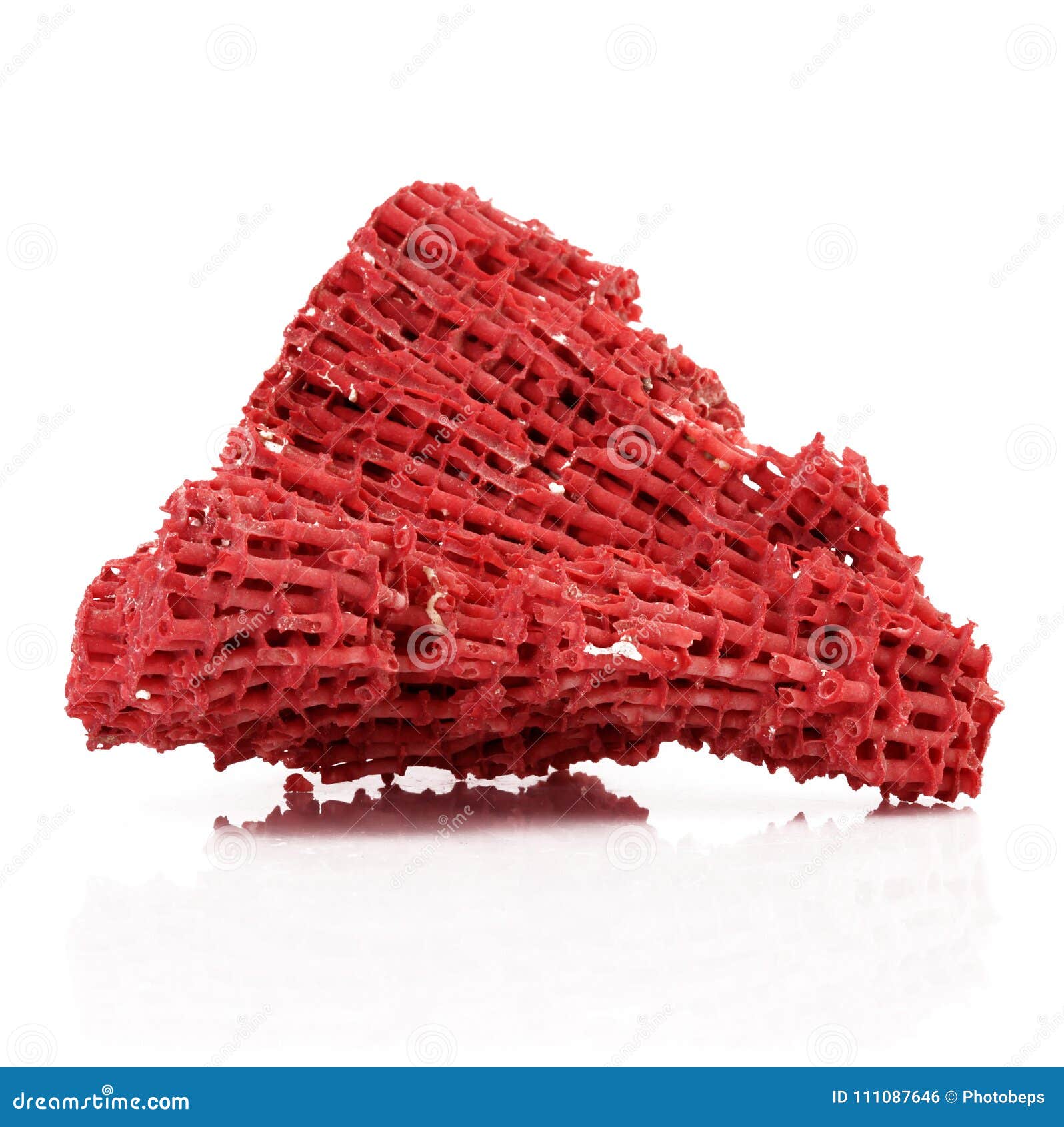 Allow it to dry then rip the bandage off the wound. The dead and dying tissue should adhere to the gauze and lift free. The tissue underneath should be pink and may bleed slightly but should be healing. Change the dressings once or twice a day. Use wet-to-dry dressings for a few days or until they become non-adherent. Then resume the regular wound dressing described above.
Allow it to dry then rip the bandage off the wound. The dead and dying tissue should adhere to the gauze and lift free. The tissue underneath should be pink and may bleed slightly but should be healing. Change the dressings once or twice a day. Use wet-to-dry dressings for a few days or until they become non-adherent. Then resume the regular wound dressing described above.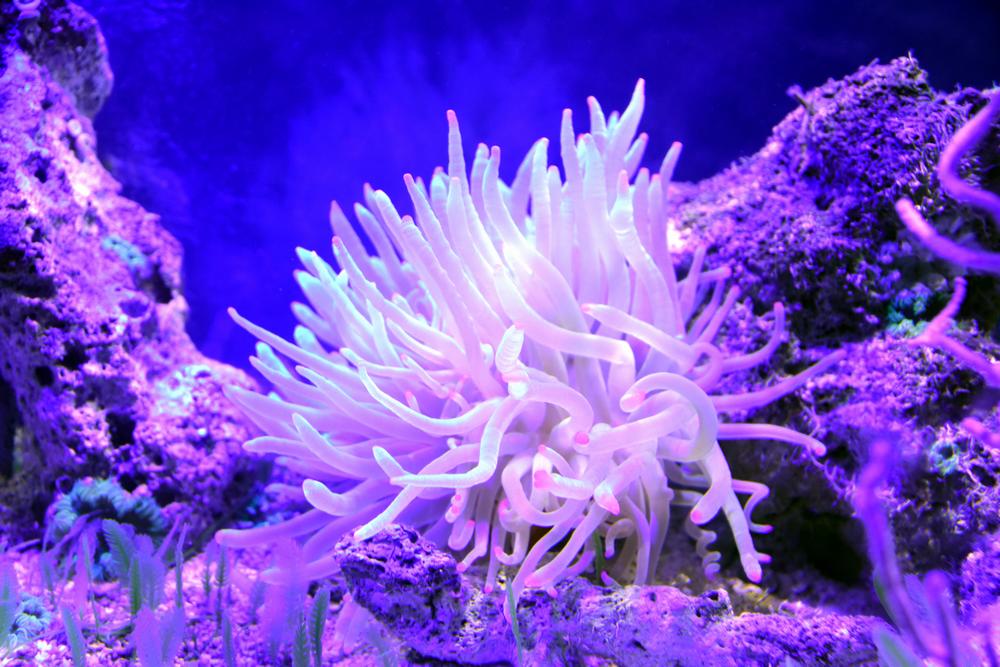 If you have these symptoms, see a physician.
If you have these symptoms, see a physician.